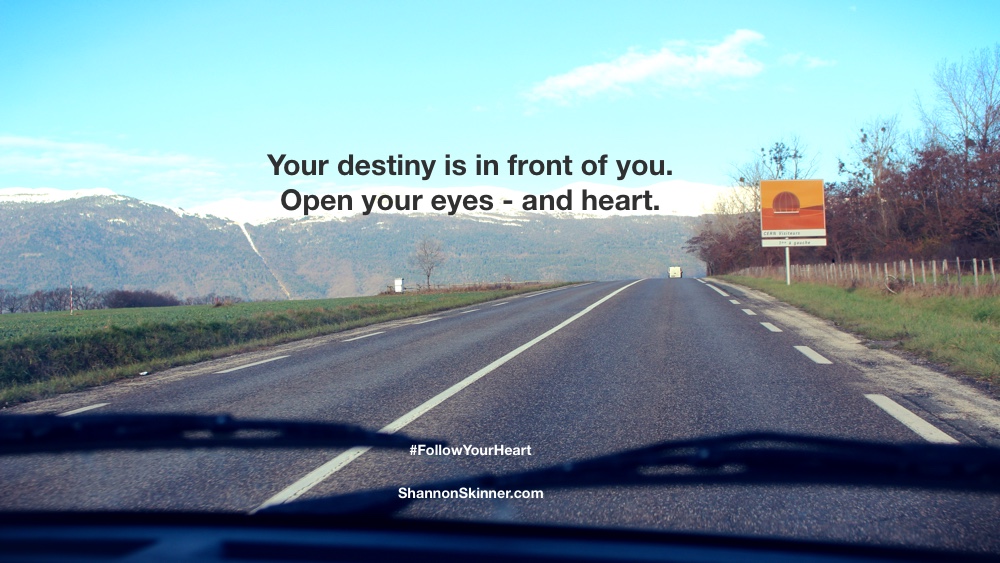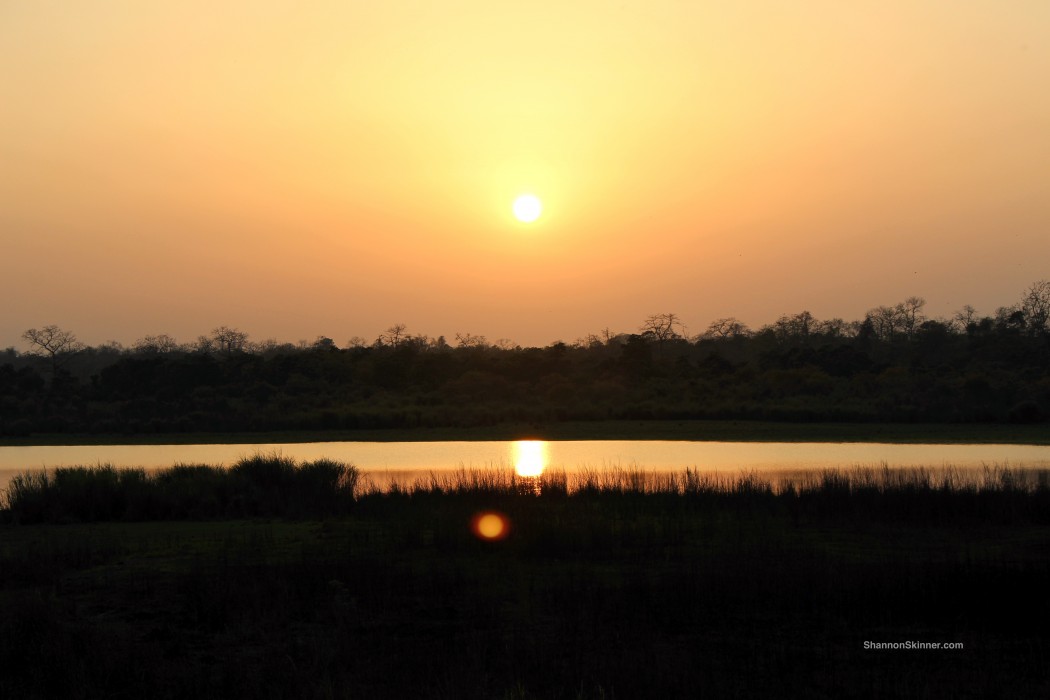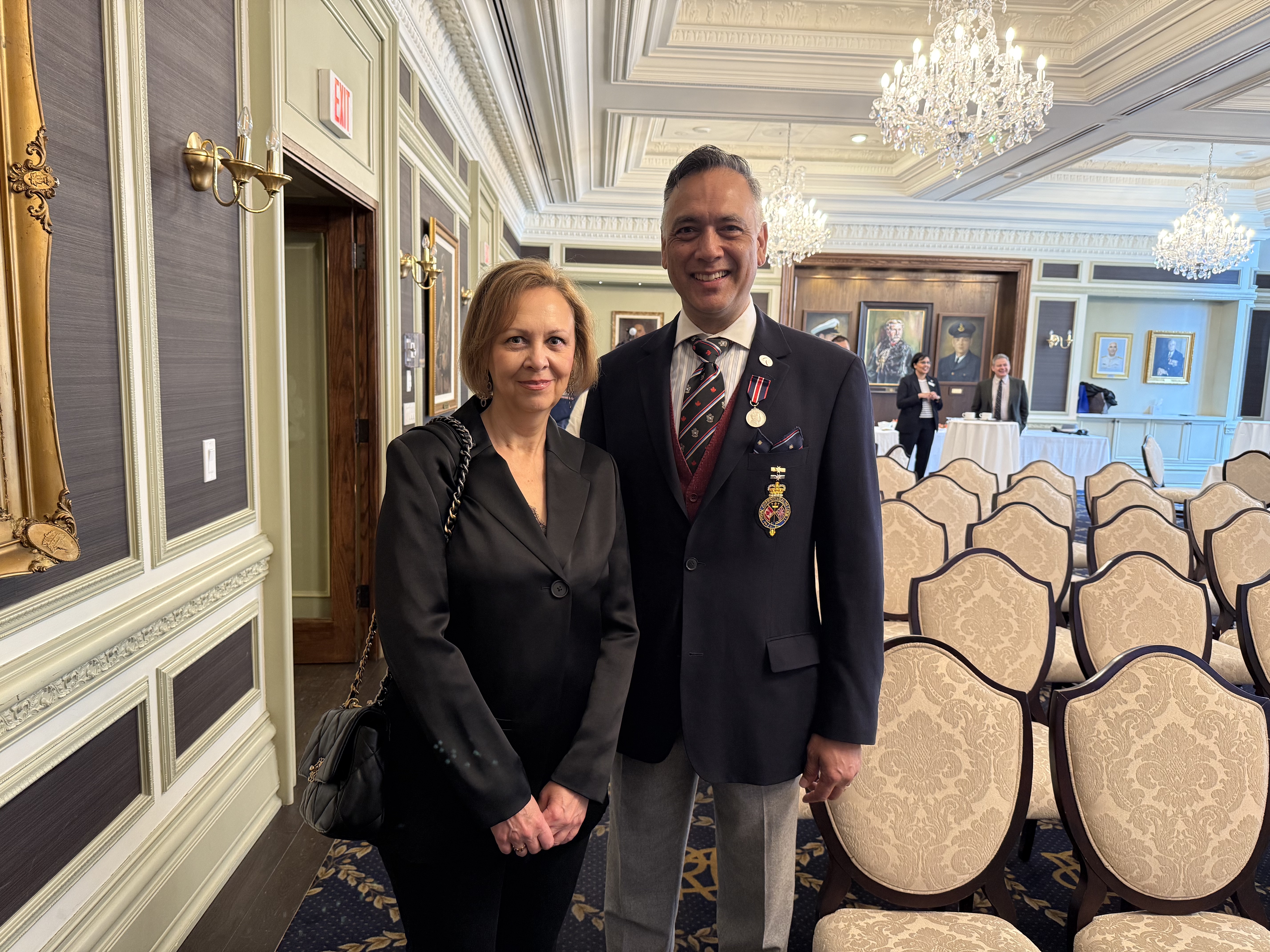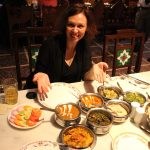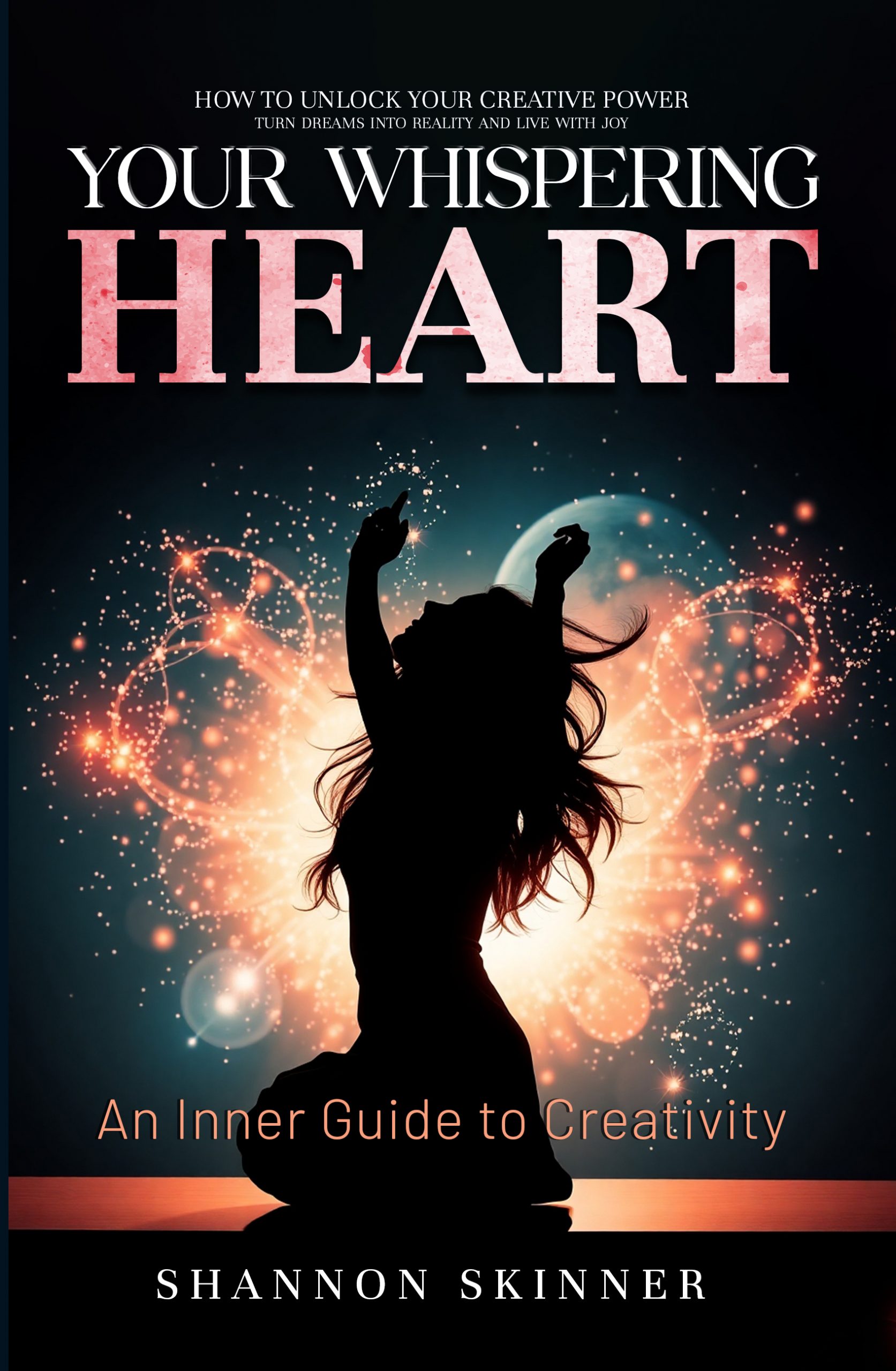Yoga and the Monsoon in India
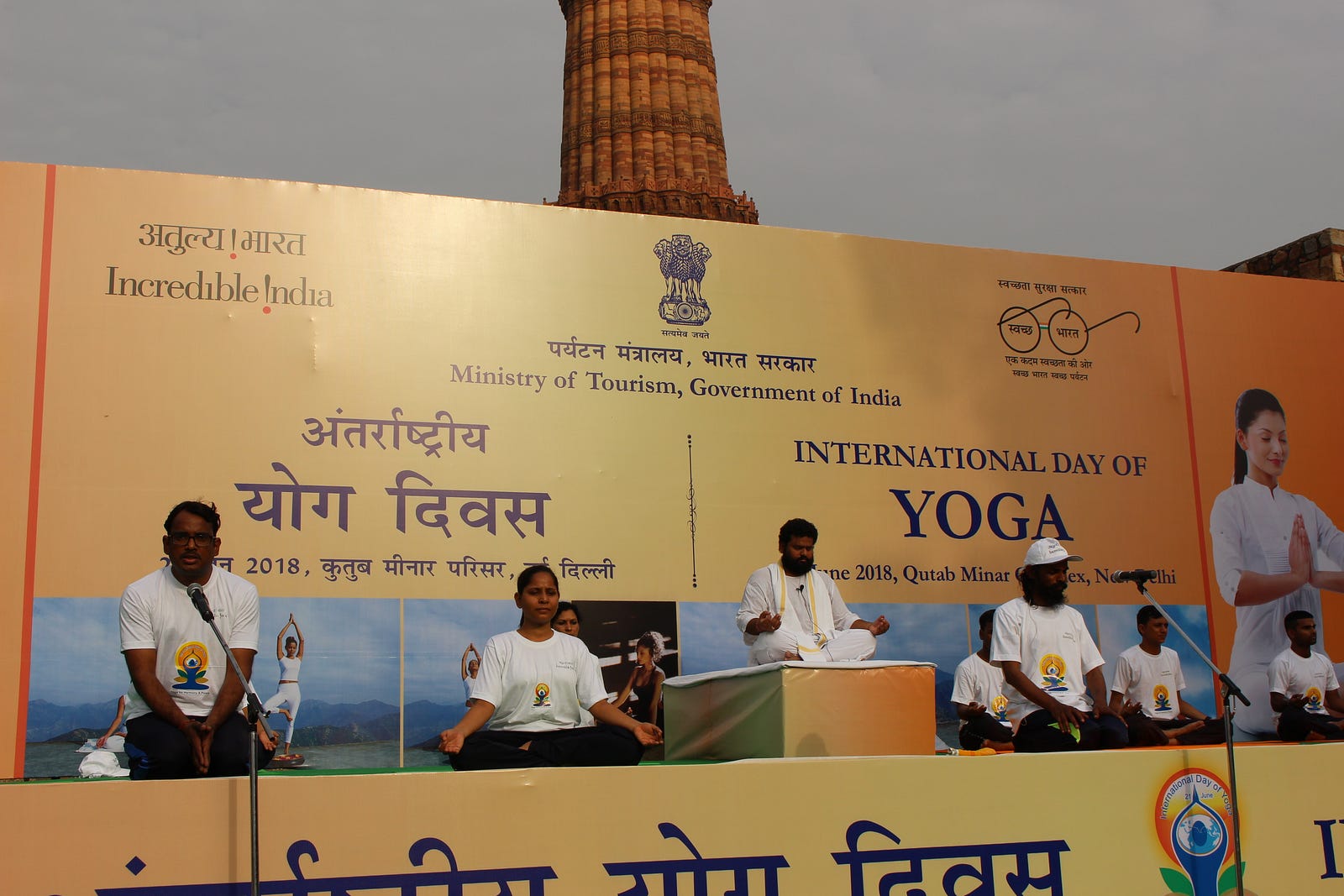
It is the summer solstice (June 21st) and the start of the monsoon season. I am in Delhi for the day to attend the 4th annual International Day of Yoga, which is celebrated by millions of people around the world. Founded by India’s Prime Minister Modi, International Day of Yoga was created to take the message of yoga’s healing properties for mind-body-spirit wellness to people the world-over.
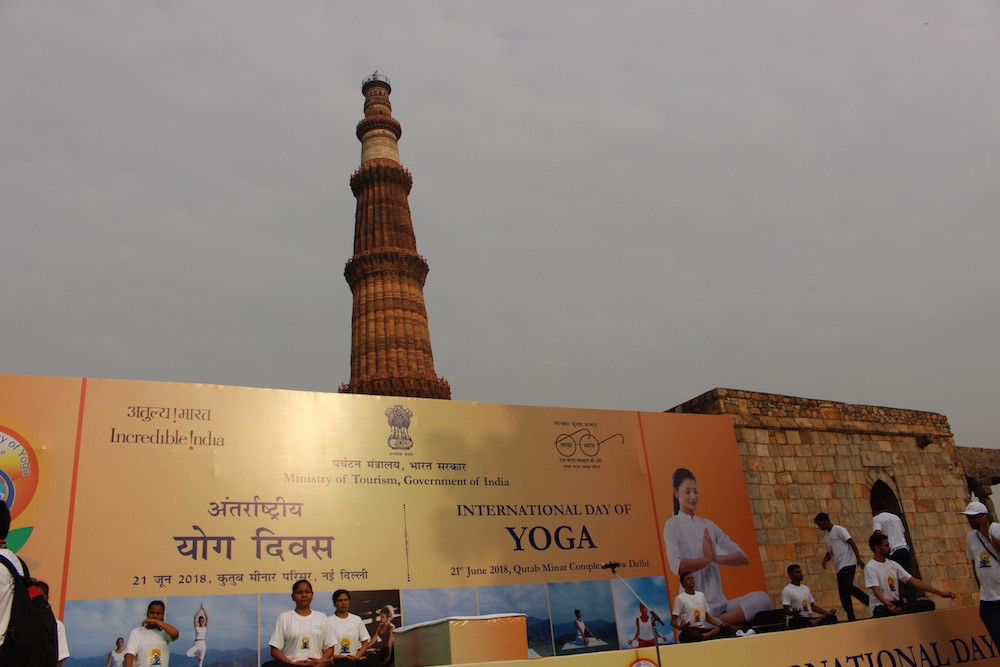
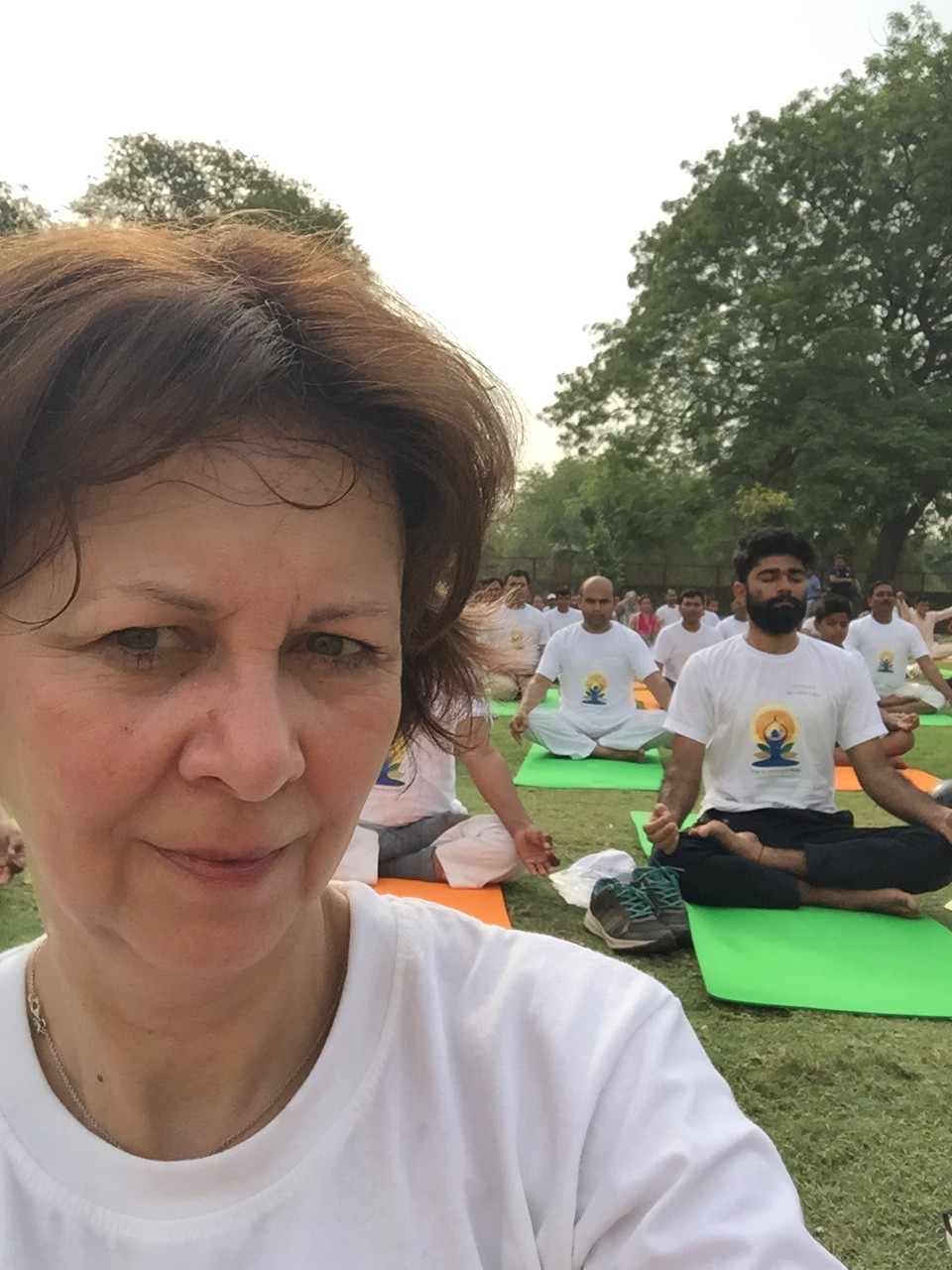
While Prime Minister Modi leads a yoga practice with a mass outdoor group of about 50,000 in a sweltering 40C, covered by international media, I attend a special VIP event at the ancient Qutub Minar Complex (UNESCO) of monuments and buildings, providing a powerful backdrop for our activities. On a stage, a real-life yoga guru speaking in Hindi, along with some assistants, takes us through a group meditation and yoga session, and although I do not speak the language, I manage to follow along and do the poses — thankfully without hurting anything.
Yoga, the ancient tradition born in India more than 5,000 years ago, has become increasingly popular in my home town of Toronto. While I have been a fair-weathered yoga person, taking classes sporadically at studios and gyms, I am inspired by the authentic guru on stage, who has probably the calmest demeanor I have ever witnessed. I want to learn more and wonder how I could incorporate yoga in my daily life. I mean, who does not want to be that calm?
Yoga does not just change the way we see things, it transforms the person who sees. ~ BKS Iyengar
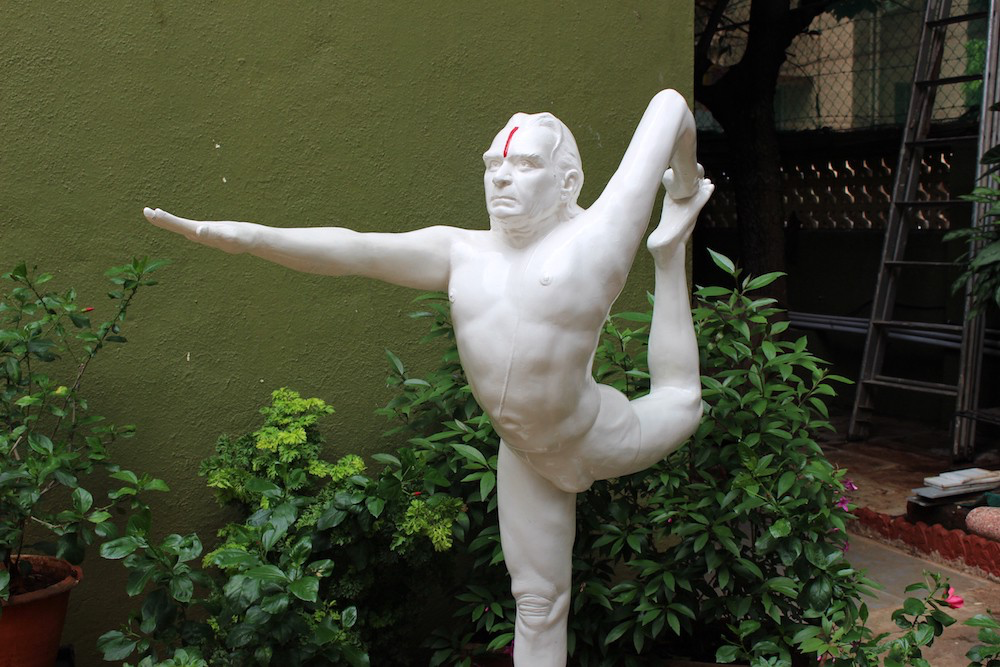
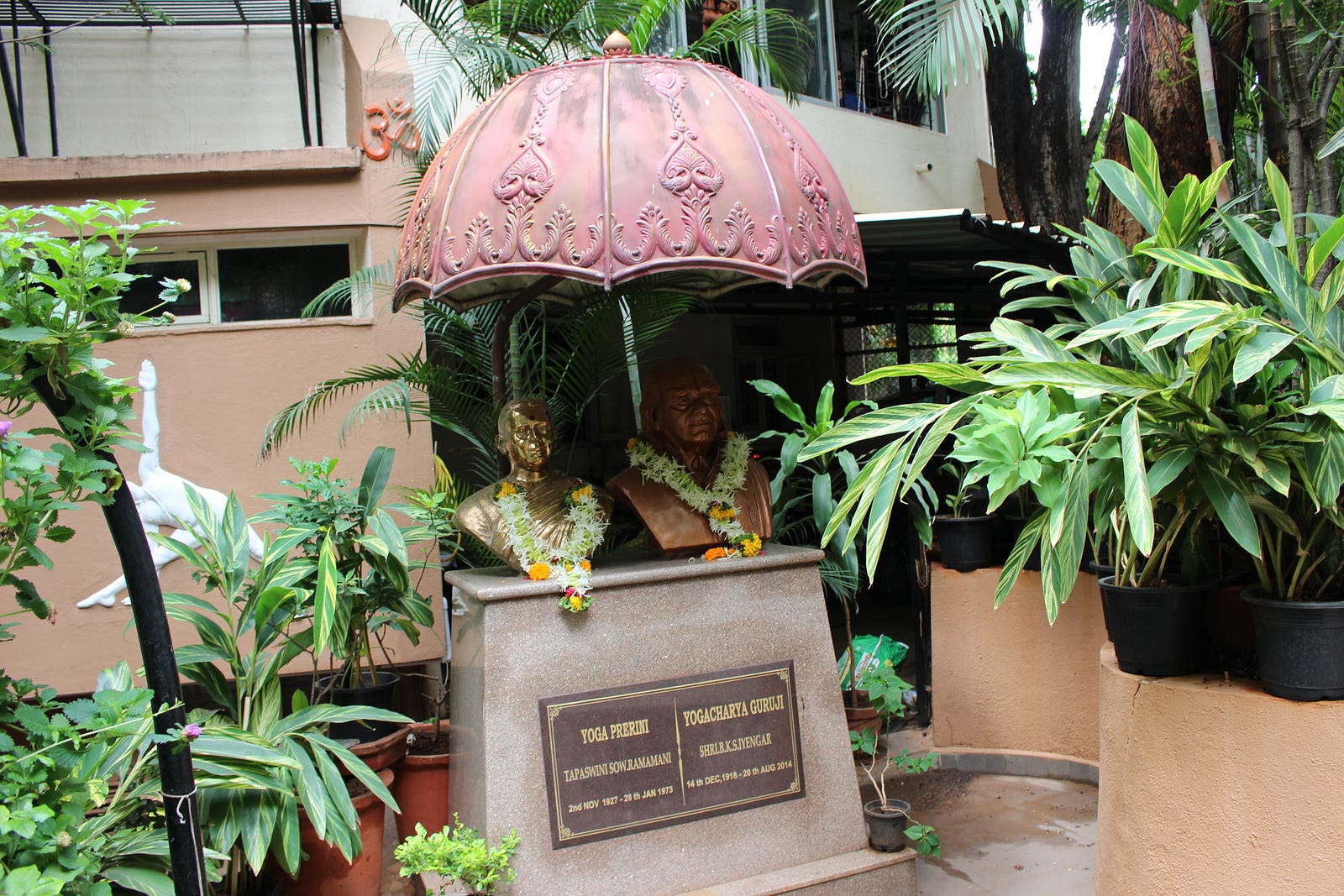
Later in the day, our group flies to Pune, Maharashtra, on the country’s west side to begin a tour of several renowned ashrams and yoga institutions over the course of a few days. Our first stop is the legendary BKS Iyengar Yoga Institute, created by Iyengar who is considered to be the founder of modern yoga. Here, I observe students in rigorous training, using all sorts of tools to stretch their bodies to the limit. If I did not know better, I would say it is torture.
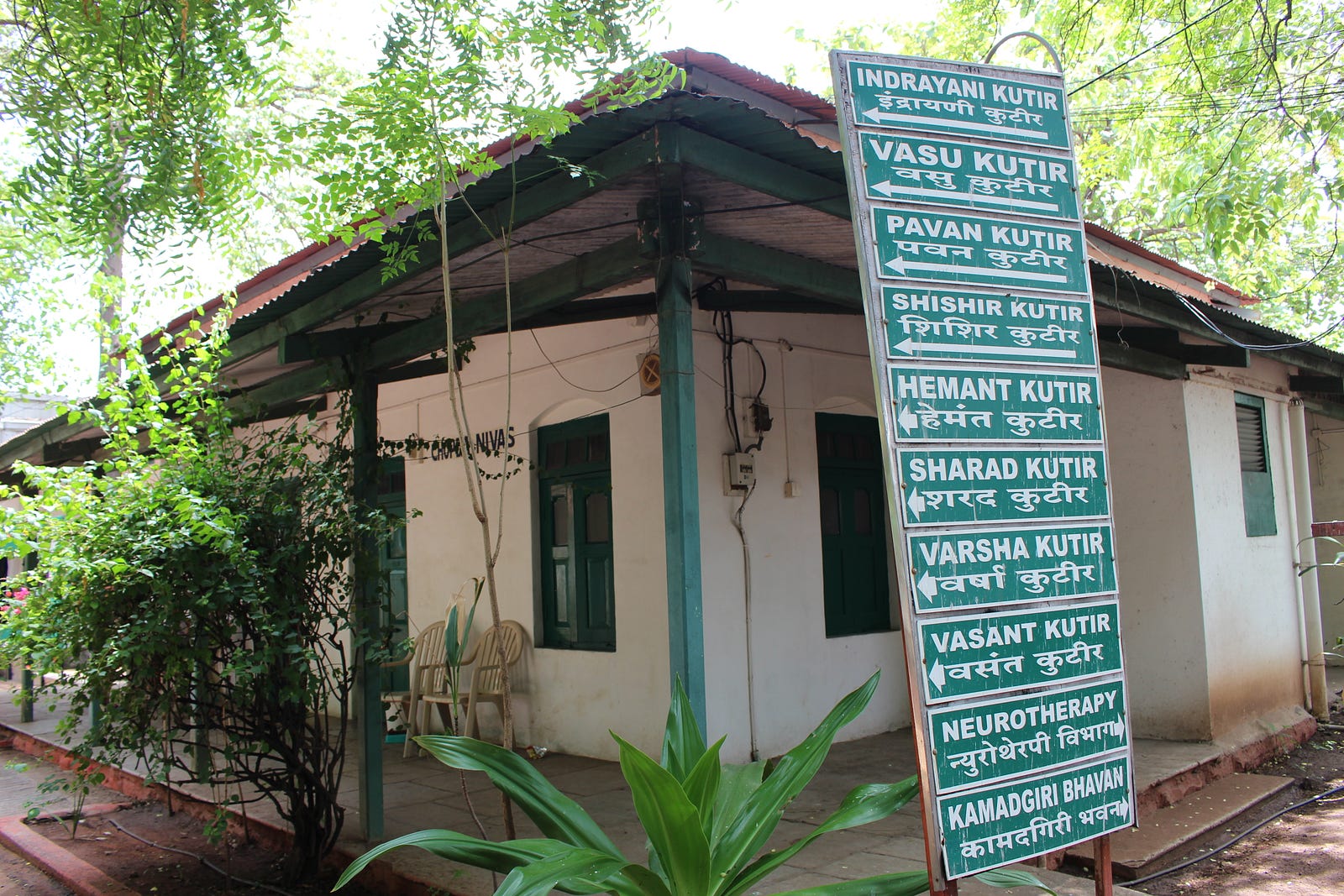
Then it is on to a nearby village, Uruli Kanchan, where we visit the Nisargaopchar Ashram, founded in 1946 by the legendary Mahatma Gandhi, which is a unique example of the field of naturopathy and it attracts people from across India for healing. Next is the Kaivalyadham Ashram, a research institution and yoga college set on a lovely property, where I attend a presentation on the benefits of yoga — more food for thought.
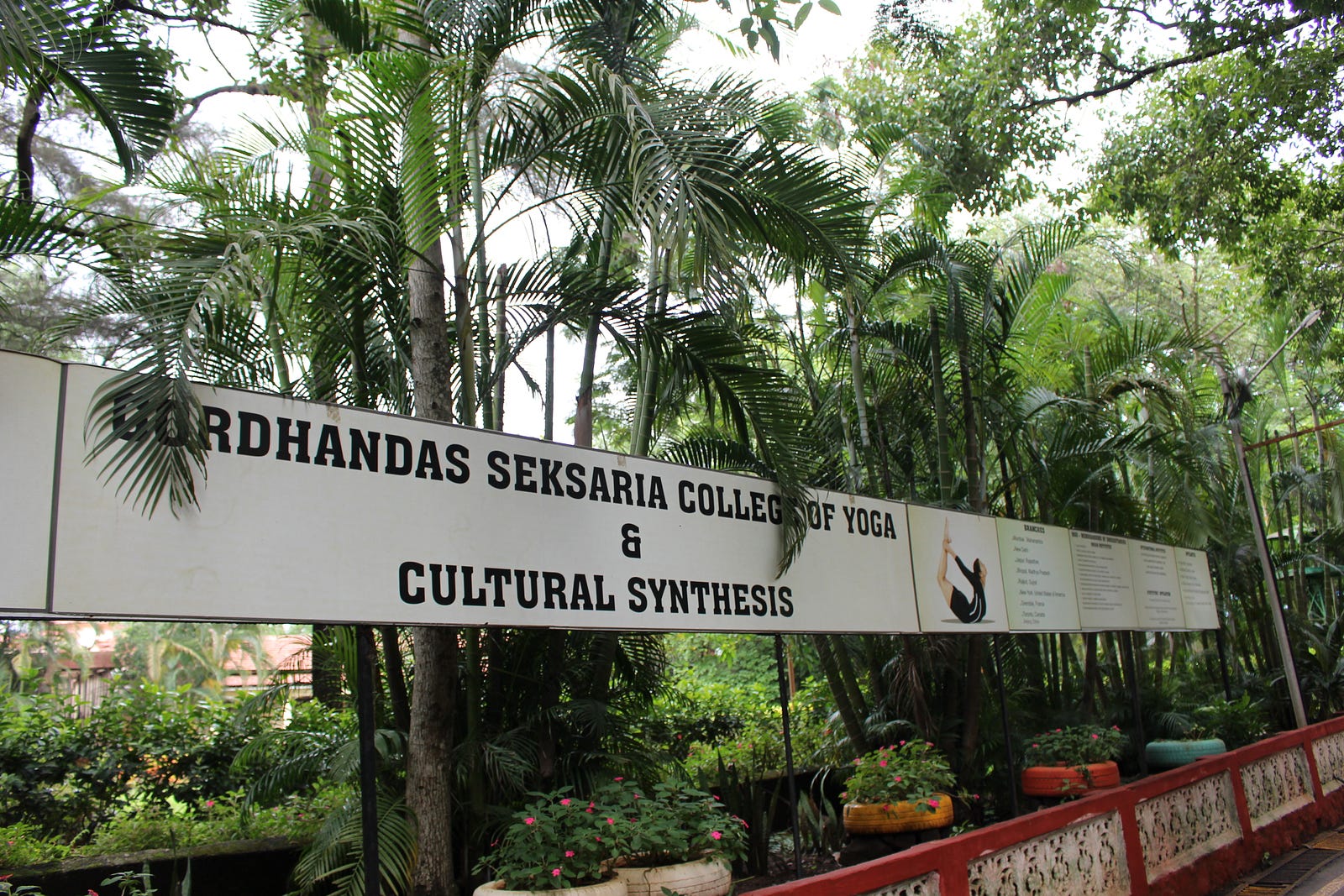
Since it is the monsoon season, it predictably begins to rain — and hard. On the drive to our final stop of the tour, in the town of Lonavala, a stunningly beautiful area of the country with hills and waterfalls, the rain slows down our coach due to visibility. Through the window of the coach, what I see is not only rain and puddles, but a beautiful landscape in deep, crisp colours — as green as green can be. There is so much beauty in the monsoon.
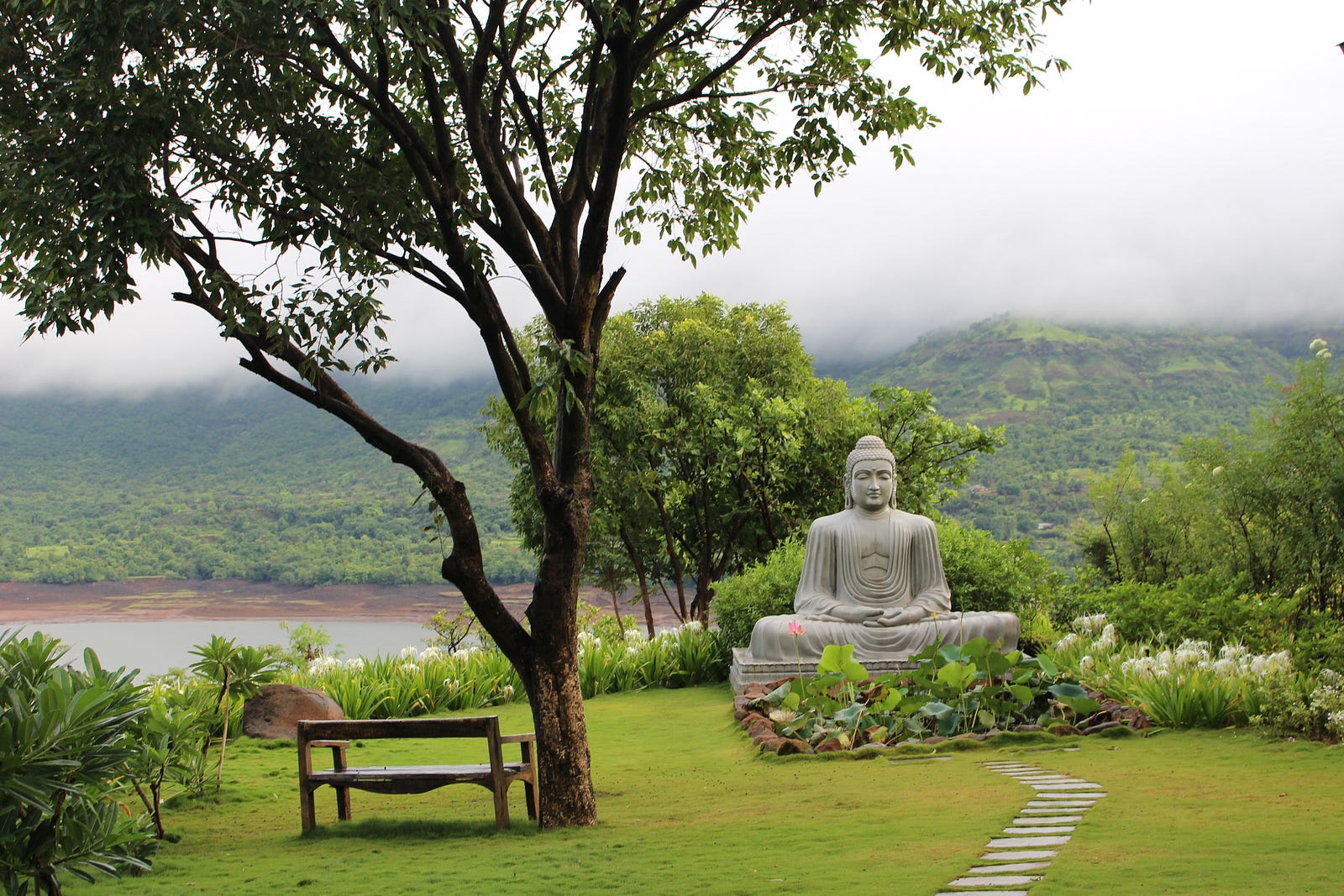
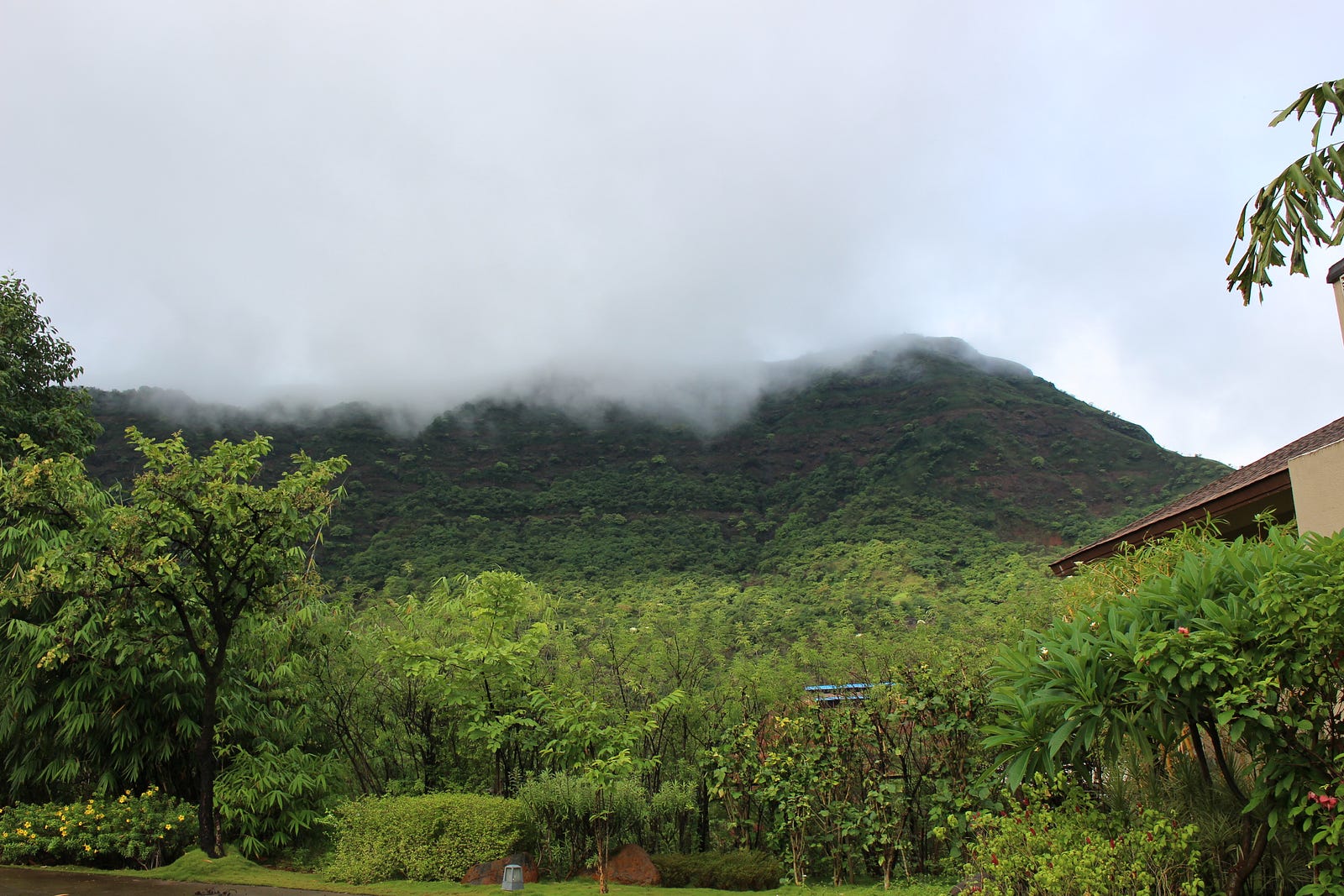
Finally, we reach our last stop, the Vedanta Academy in Lonavala, which is founded by the legendary Swami Parthasarathy. Set on a lovely modern campus, the institution focuses on teaching the “truths of life.”
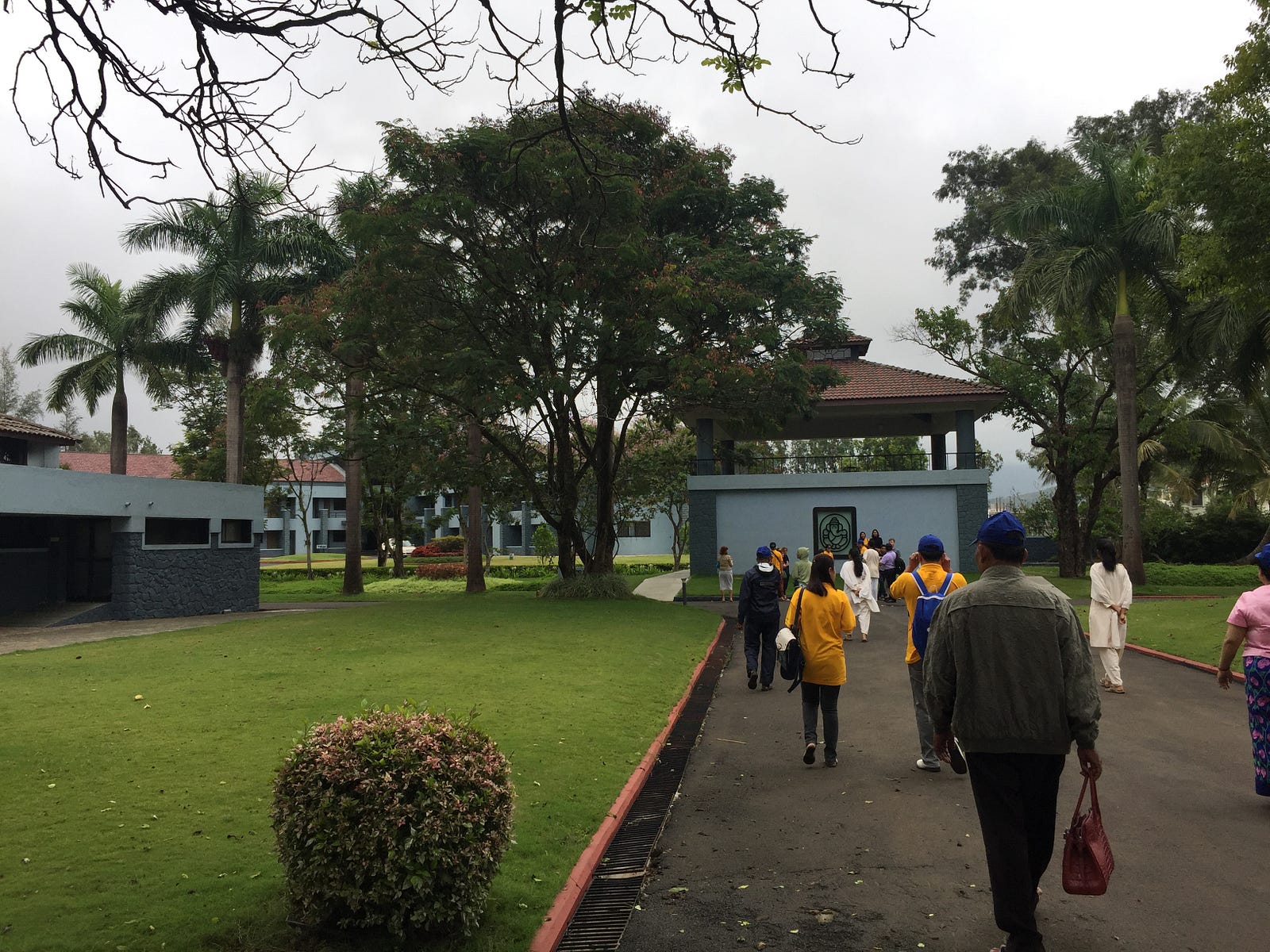
And if there is a truth I have learned on this trip it is this: the monsoon is worth experiencing and to do yoga in it is…divine.
If you go…
Where to stay:
In Delhi: Hotel Ashok, 50-B Central Bank Of India, Diplomatic Enclave, Chanakyapuri, New Delhi, Delhi 110021, India
In Pune: Four Points Sheraton, 5th Mile Stone, Nagar Rd, Pune, Maharashtra 411014, India
In Lonavala (near Pune and Mumbai): Atmantan Wellness Resort, Village Palse, Tamhini Ghat Rd, Mulshi, Maharashtra 412108, India
Shannon Skinner is an award-winning creator/host of ExtraordinaryWomenTV.com, author, radio host, writer and international speaker. More information at ShannonSkinner.com.
Related articles:
Atmantan Wellness Resort, Pune, India: review
A trailblazing woman’s guide to Wyoming, the “Equality State”
Azores: Sao Miguel island, my travel guide
Azores: vlog of Sao Miguel island (video)
A girl on a bus in Pune, India, taught me the importance of being present
7 Days in Portugual’s Azores and Madeira
Dalai Lama, Swiss Robin Hood and the Pursuit of Happiness
International Yoga Day
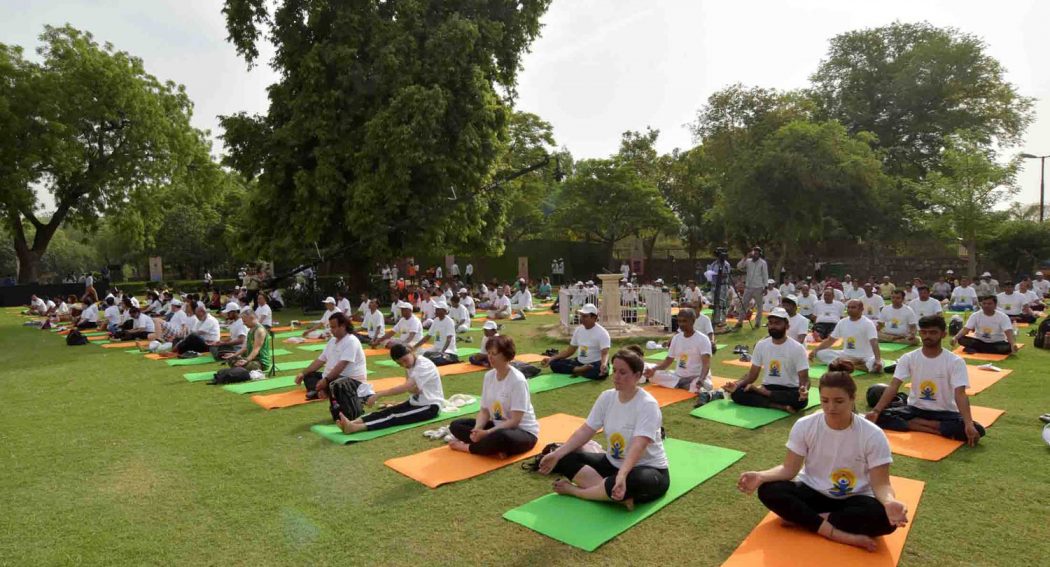
The participants in the mass performance of Common Yoga Protocol, on the occasion of the 4th International Day of Yoga -2018, at Qutub Minar Complex, in New Delhi on June 21, 2018 (photo courtesy Ministry of Tourism, Gov’t of India)
On this year’s summer solstice, June 21, 2018, millions of people around the world celebrated the 4th annual International Day of Yoga (IDY), with major activities taking place in Delhi, India. Founded by India’s Prime Minister Modi, IDY was designed to take the message of yoga’s healing properties for mind-body-spirit wellness to people all over the world.
In India, Prime Minister Modi lead a yoga practice with a mass outdoor group of about 50,000 in sweltering heat of 40C. There was a VIP event at the nearby Qutub Minar Complex in Delhi, where yours truly participated (photo: first row, third from the right). Events took place around the globe from the U.K. to Denmark to Canada to the U.S.
The origins of yoga began in India more than 5,000 years ago, though it is only in recent times that yoga has caught on in the western world. Yoga’s history is fascinating. According to India’s Ministry of External Affairs: Yoga is essentially a spiritual discipline based on an extremely subtle science, which focuses on bringing harmony between mind and body. It is an art and science of healthy living. The word ‘Yoga’ is derived from the Sanskrit root ‘Yuj’, meaning ‘to join’ or ‘to yoke’ or ‘to unite’. (Dr. Ishwar V. Basavaraddi).
There are many different forms of yoga. I’ve decided to explore a few of them. While I am somewhat of a fair-weathered yoga practitioner, I am aware of the health benefits from having a regular yoga practice. Mostly, I drop in for classes at my gym, or sometimes I do poses at home, however I do know it is not enough. I will explore more about yoga in coming blog posts.
Shannon Skinner is a Toronto-based author, writer, speaker, radio host and host/creator of ExtraordinaryWomenTV.com, who loves to travel the world and share her stories. Tweet to her at @Shannon_Skinner.com.
* **
Other related posts you might be interested in:
Atmantan Wellness Resort, Pune, India: review
A trailblazing woman’s guide to Wyoming, the “Equality State”
Azores: Sao Miguel island, my travel guide
Azores: vlog of Sao Miguel island (video)
A girl on a bus in Pune, India, taught me the importance of being present
7 Days in Portugual’s Azores and Madeira
Dalai Lama, Swiss Robin Hood and the Pursuit of Happiness
7 reasons to travel
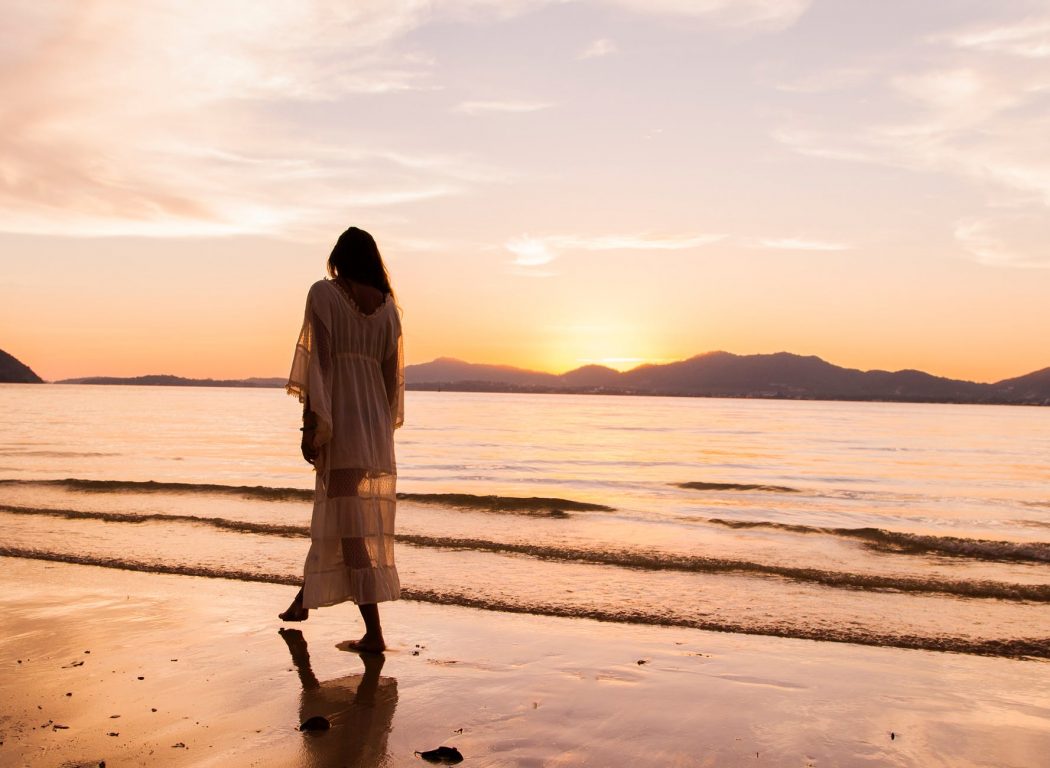
There are travellers and there are tourists; one is hell-bent on exploring the world’s offerings, and the other has a focus on vacationing.
Travellers have a need to travel and may spend a lot of time planning; whereas tourists, or one who vacations, is doing so occasionally and for short period of time, and it is usually for pleasure or rest and relaxation.
Regardless of whether you are a traveller or a tourist, there are plenty of reasons to travel. Here are some of them:
1) Good for your wellbeing
Travel can have benefits to your physical health because it gets you mobile and moving. It can also have benefits for your mental health and spiritual wellbeing, too. Sometimes, not always, distance is the great problem solver to our problems and woes.
I am not one to rest when I travel somewhere new, as I would rather push myself to hit the ground running and explore, but there are times when it is appropriate to chill. Either way, I feel better and healthier when my mind is engaged with learning and discovering a new place.
2) Great for creativity
When we are experiencing new cultures, and having distance away from the mundane and routine, it opens up spaces in our mind that were not there before. Spaces where creativity is sparked.
I am the most recreative when travelling. I am also the most productive when I’m trapped on an airplane for several hours with nothing else to do but focus on my work.
3) Get a different perspective
Sometimes we need to have a different way of looking at situations or events, or our work. Some cultures, such as those in South America, seem “slower” compared to our fast-moving North American way of living, where people are not in a rush, and that pace can can teach us a thing or two about perspective.
During a family trip to Argentina, I remember being quite late for a talk my nephew was giving at a local school where our family friend taught. I was concerned, but her reply was: “Don’t worry, no-one died.” It put it into perspective for me.
4 . Find meaning in your life
Volunteer tourism is on the rise, with people travelling to destinations to volunteer their time and/or services, whether it is human rights causes or natural disasters, or simply work at an orphanage.
5. Opens your mind
We fear what we don’t know. This is the root of racism. When we travel, we experience what others from different cultures experience and that develops into empathy and understanding.
When our minds are open, we are more open to different points of view and ways of living.
6. Escapism
Okay, so there is nothing wrong with using travel as a means to escape – now and then. But beware of using it as a crutch. There are times when we just need to “shut out the stuff that is tormenting us.” Just be aware of why you are doing it.
7. Transform your life
Lastly, travel can be a wonderful way to transform your life and/or to spark necessary change. There are numerous stories of people making a conscious decision to change their life through the experience of travel and adventure. It may be as adventurous as an Indian wildlife safari, tasting Swiss wine in beautiful vineyards, or a visit to thermal baths in Switzerland for R & R.
Shannon Skinner is the creator/host of ExtraordinaryWomenTV.com, author, international speaker and travel writer.
Other posts by Shanon you may enjoy:
Shannon’s Indian Wildlife Sari Adventure
Travel tips for vegetarians
For 30 years now, I have been a vegetarian, which, without getting into rigid labels, I simply define as someone who does not eat meat. I’m often asked how I manage when travelling around the world. For the most part, I usually do not have any problems, or I find a way to get by.
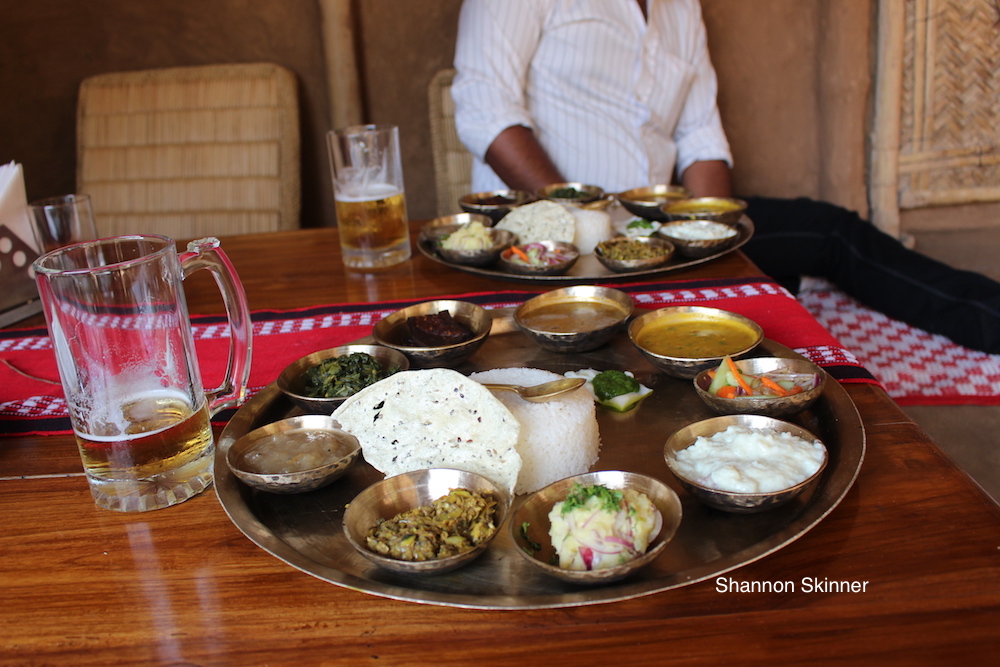
Vegetarian delights in the state of Assam, northeast India
Some destinations are heavy meat-eating cultures and that means eating in a restaurant can be tricky. In Canada, where 4 per cent of the population is vegetarian/vegan, you do not have to look any further than our own backyard of beef-province, Alberta (where my family lives) and its influence on menu items. Or Texas in the United States.
Internationally, India is a paradise for vegetarians. Having travelled there twice last year, I had no issues finding vegetarian fare, mostly because a good portion (30 to 40 per cent) of the country is vegetarian due to cultural and religious traditions. If you ask me, Indian food is the most flavourful food on the planet.
But not all nations are so accommodating to non-meat eaters. Some years ago, I visited Prague and, at the time, finding fresh vegetables and salads proved to be a challenge (the Czech Republic has one of the lowest percentages of vegetarians at 1.5 per cent of the population). The solution to my problem was a Chinese food restaurant, which made a delicious stir-fry that I ate several nights in a row (hey, you do what you need to do).
In Morocco, the cuisine is heavily meat-based, but I discovered tasty alternatives. In Thailand, the chicken never looked like chicken, so thankfully I was able to give it a pass.
In some cultures, some amount of meat is tossed into most dishes, such as Italian pasta sauces. Or vegetables are generally cooked in meat or fish broth, like in parts of Asia. And in other countries, meat and seafood is a separate dish from vegetables and grains. In Switzerland, I found it impossible to go without trying the cheeses, simply because they are Swiss.
Here are 5 tips for vegetarians (and vegans) when on the road:
1. Start with good communication: Learn to say “I am a vegetarian” or “I do not eat meat” in the language of the country you are visiting. This helps the wait staff understand what your requirements are, so you don’t mistakenly order a dish that could have meat in it. Not only does it facilitate understanding, it is being respectful of the staff.
2. Research and plan in advance: You can always research local restaurants that cater to vegetarians or at least have some meatless dishes. A quick Google ought to do the trick. There are also some apps that might be useful, such as FoodSpotting.
3. Pack protein snacks in your bag: As a vegetarian on the road, eliminating meat is one thing, but finding protein substitutions can sometimes be even more challenging. Pack nuts, and protein bars and powders, into your day bag to ensure you have enough protein in your diet while away.
4. Stay in a self-catering place: Having your own kitchen away from home helps you better control what you are eating. And it does not matter what your diet restrictions or preferences are, whether you are vegan, gluten-free, have food allergies, or a health nut.
5. Pre-arrange meals or take a packed lunch – If you are on a road trip, or taking daily excursions, pick up pre-packed foods and pack a lunch. Also ask your hotel’s restaurant the night before your day excursions if you can pre-arrange a packed lunch.
If you are a vegetarian or vegan who travels the world, I would love to hear what your tips are. Tweet to me at @Shannon_Skinner or leave a comment below.
Love,
Shannon
Shannon Skinner is a Toronto-based, award-winning television and radio show host and producer, international speaker, author and creator of ExtraordinaryWomenTV.com. Her passion is to travel the world and write about it. Tweet to her at @Shannon_Skinner.
What I learned at Mother Teresa’s Kolkata Ashram
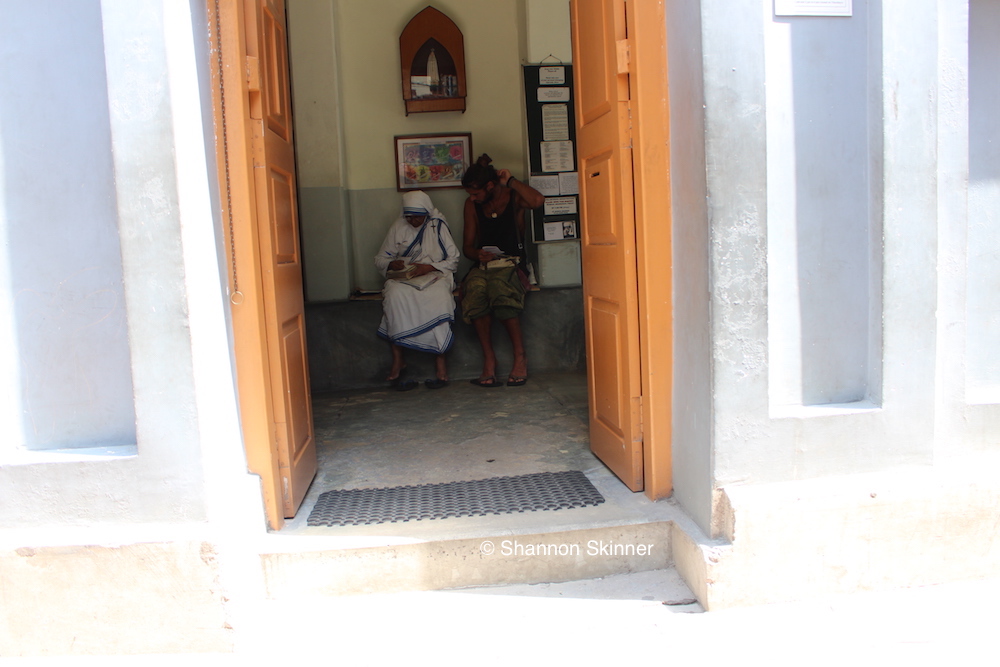
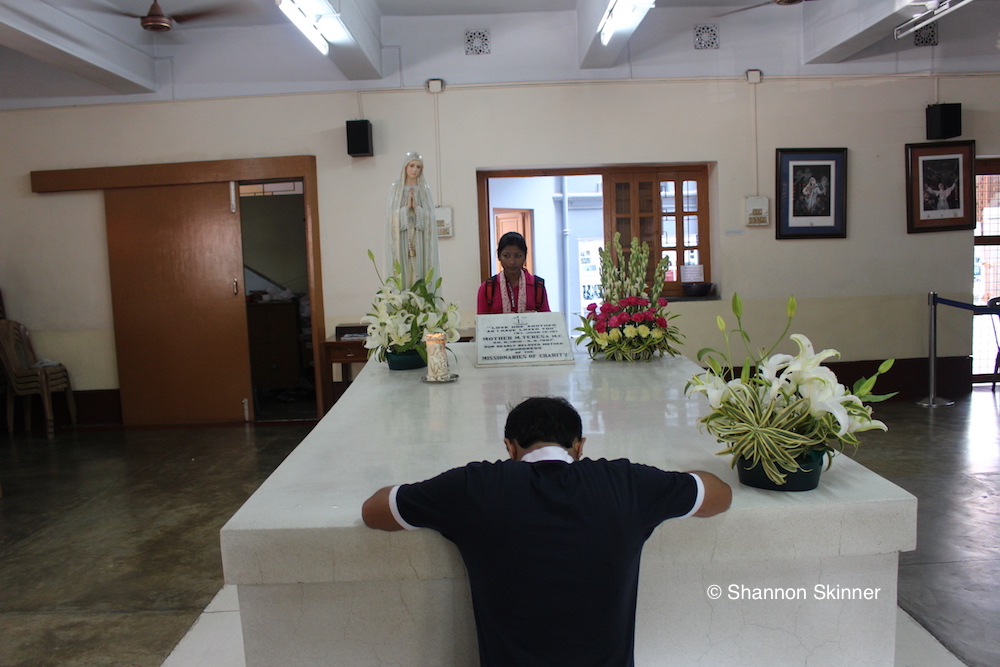
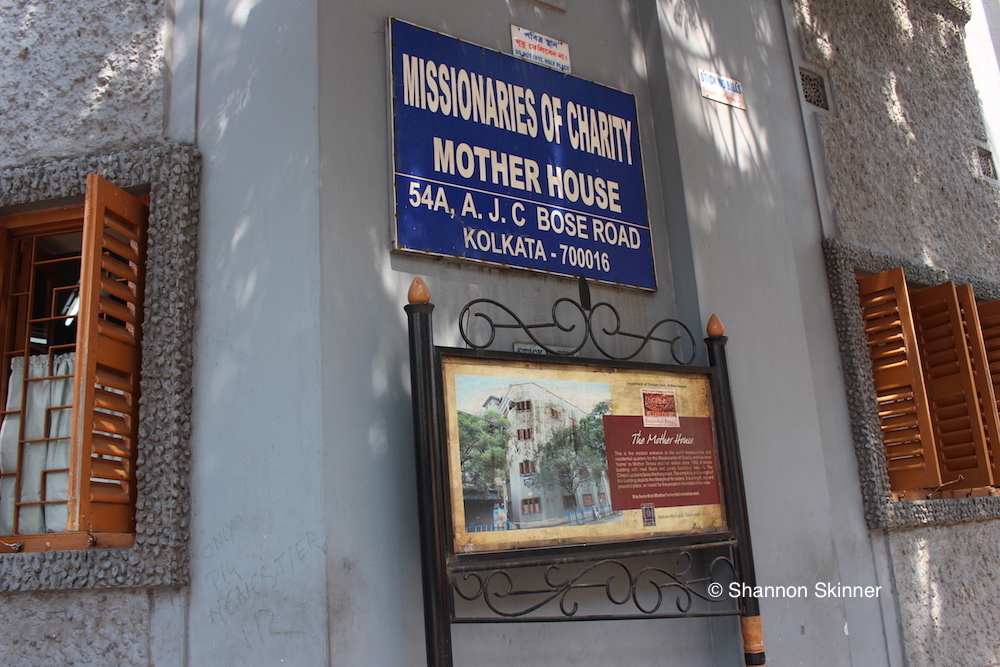
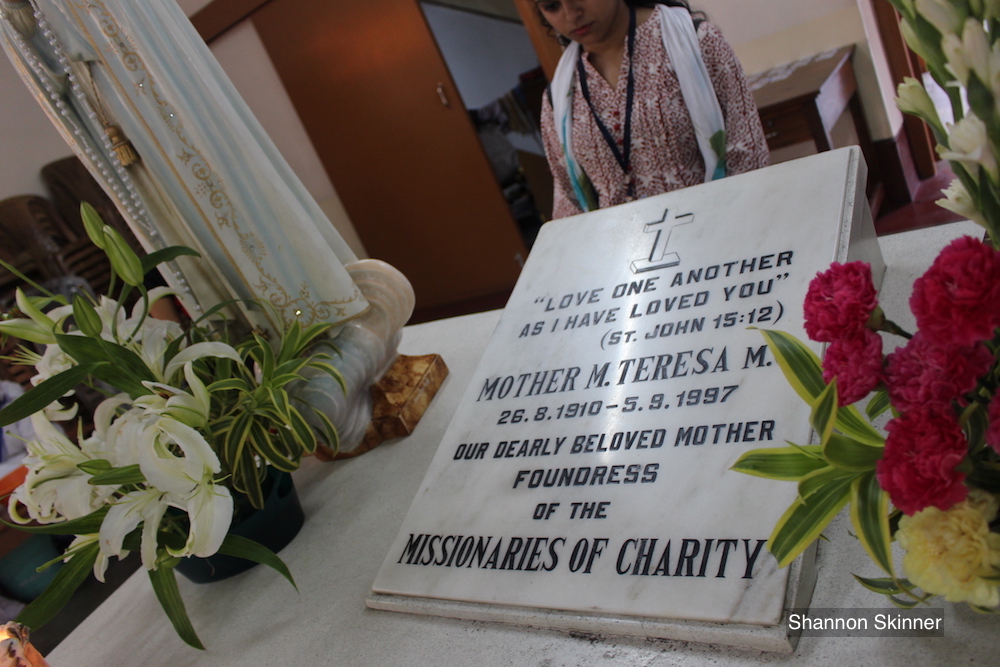
The photo speaks for itself
How has travel opened your mind and heart? I would love to hear from you. Tweet me at @Shannon_Skinner.
Love,
Shannon
Shannon Skinner is a Toronto-based, award-winning television and radio show host and producer, international speaker, author and creator of ExtraordinaryWomenTV.com. Her passion is to travel the world and write about it. Tweet to her at @Shannon_Skinner.
Experience the life of a Maharaja in India’s “Pink City,” Jaipur
Rajasthan, the “land of the Maharaja,” is an exotic desert state in western India. It’s capital, Jaipur, is a historic walled city famous for enchanting “pink” fortresses and palaces, and royal dynasties. Here in the “Pink City,” I got a taste of the opulent lifestyle of the Maharaja, the once powerful rulers of Rajasthan, by staying in a royal family home.
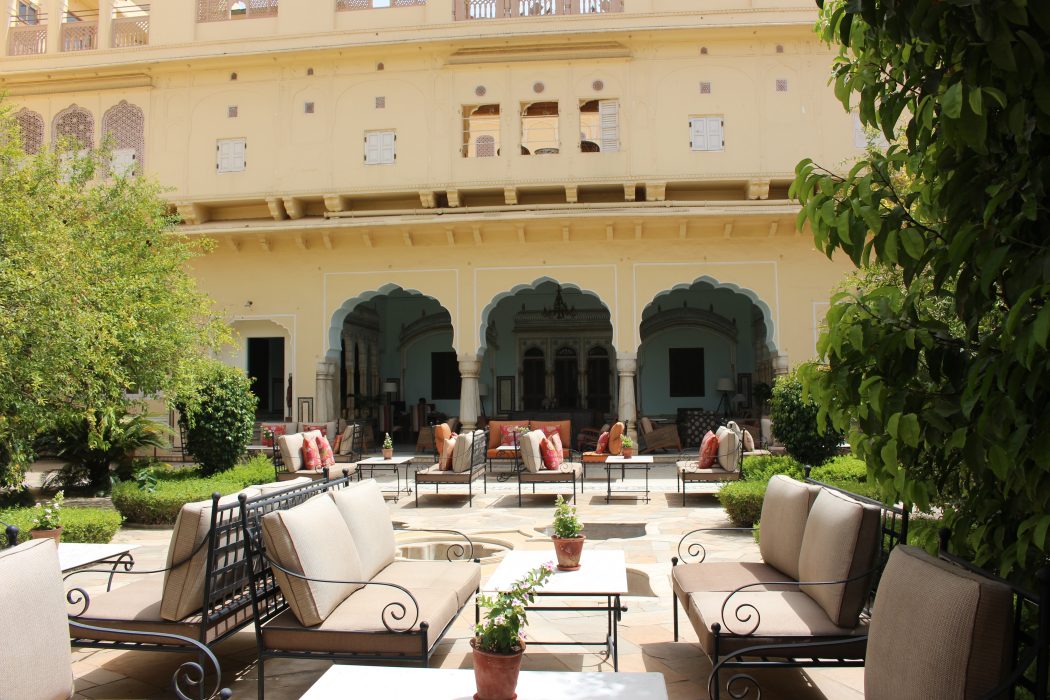
“Rajasthan has many small boutique hotels that were the residences of noble families,” said Vikas Abbott, managing director, Vasco Travel, India’s largest family-run, inbound travel company. “Now they’ve converted them into nice heritage hotels. It’s really a different experience and these hotels give you that character of India.”
Jaipur was founded in 1727 by Maharaja Sawai Jai Singh II, when this area of India comprised Princely states. Men wore silk robes, jewels and colourful turbans (some continue the tradition); and women wore elegant sarees. It’s a place I have always been draw to.
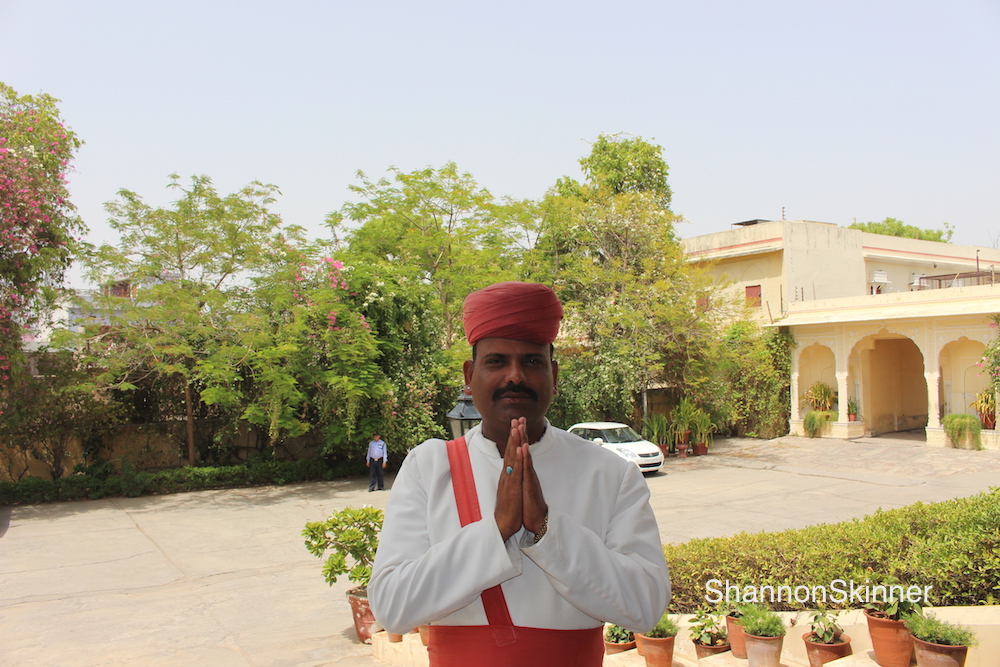
This May, I traveled to Jaipur after speaking at the Women’s Economic Forum in Delhi, for some creative inspiration. In the midst of the desert, despite a heat wave (47C), I found an urban oasis: the Samode Haveli (“palace”), a heritage luxury hotel built nearly two centuries ago as the residence for the rulers of Samode, Rajasthan. Today, it is owned by Mr. Raghvendra Singh and his brother, descendants of the rulers, who inherited the royal residence.
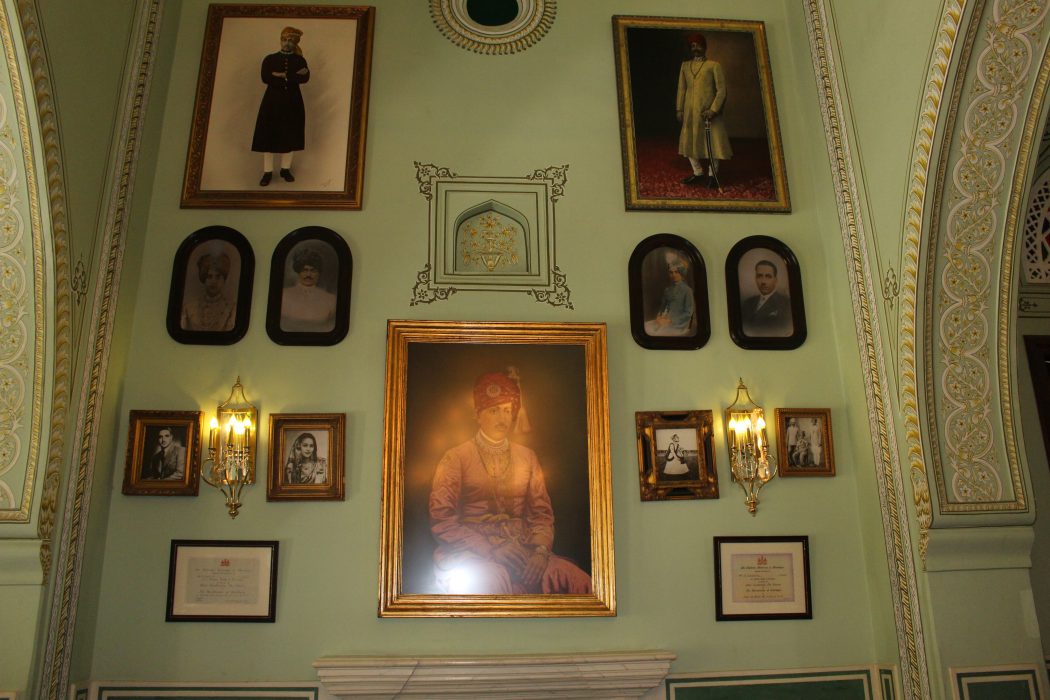
Faced with the challenges that come with inheriting a royal residence, such as finances and maintenance, in the ‘80s, the Singhs decided to convert their property into a luxury boutique hotel. “I had a vision and it turned out to be good for us,” says Mr. Singh, a distinguished and modern businessman. The Singhs were ahead of their time, when many other families who inherited royal residences also faced similar challenges.
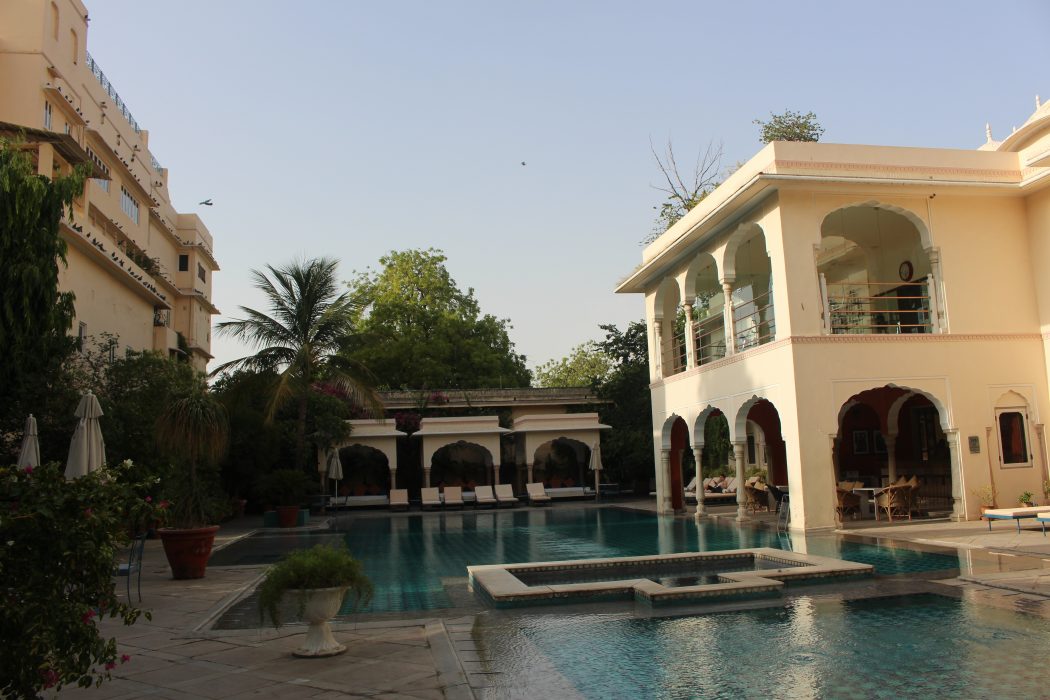
The royal apartments were turned into deluxe rooms and suites, and each has a unique and distinctive character, while maintaining contemporary amenities to meet the needs of the modern-day traveler. The rooms are situated around courtyards, gardens and a stunning swimming pool. There is even a modern spa and fitness area. Meals are served in opulent rooms with chandeliers and paintings of the family’s Maharaja ancestors (note: I must say my favourite meal was stuffed tandoori bell peppers with potato and dried fruit and cheese).
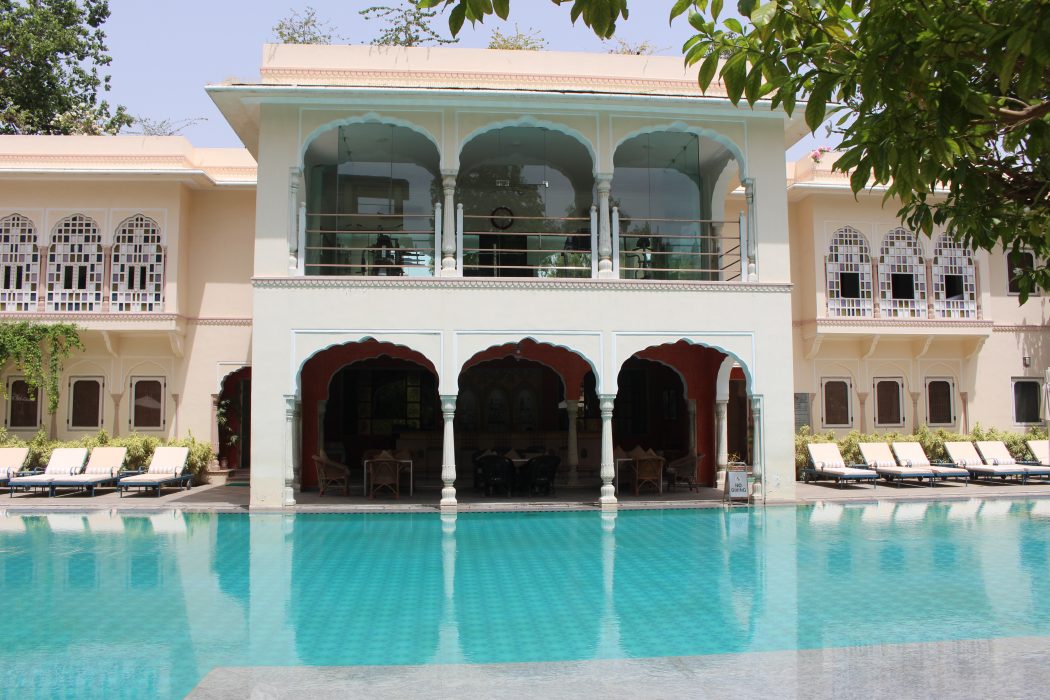
The Singh family (Raghvendra, his wife and two children) resides in a private residence in the complex; and expansion plans are underway for 50 more rooms.
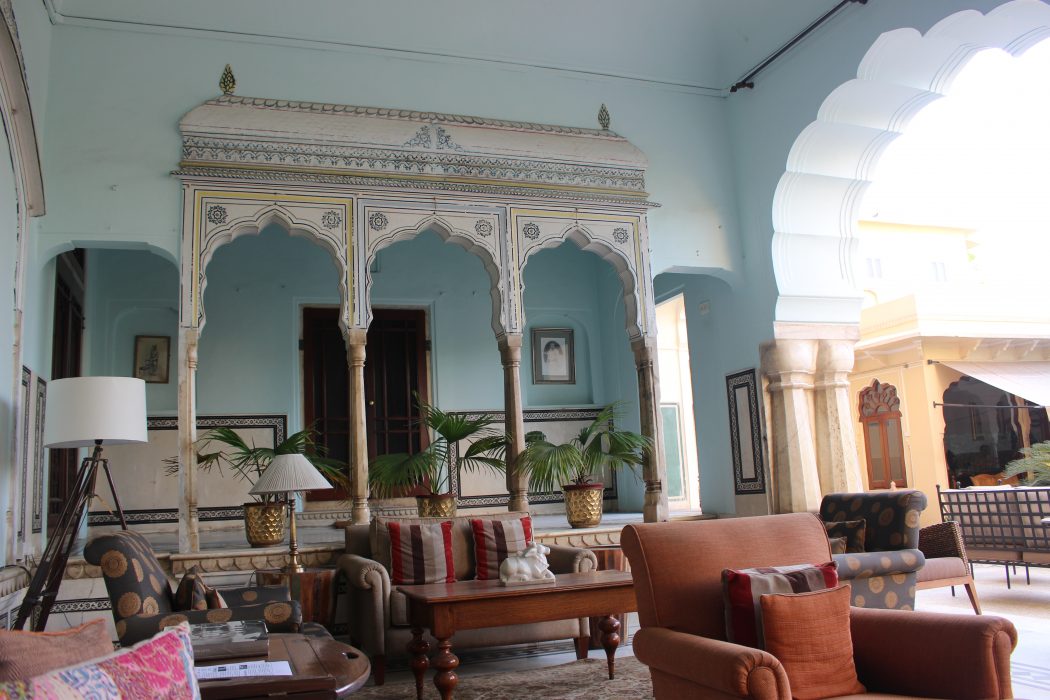
It was like staying in a palace and I felt like a queen.
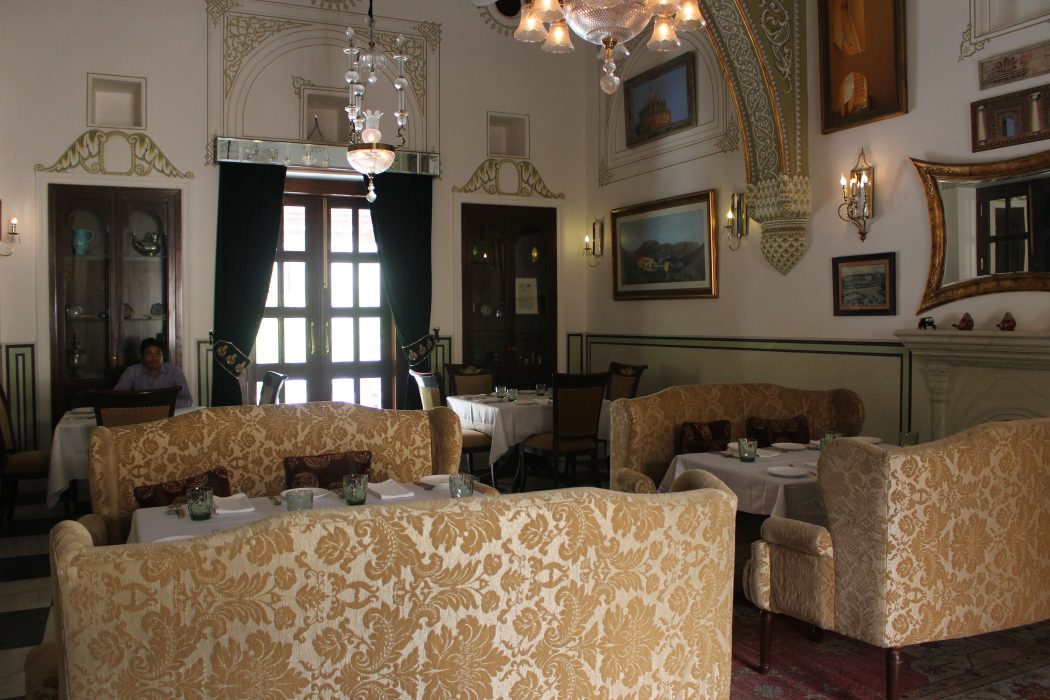
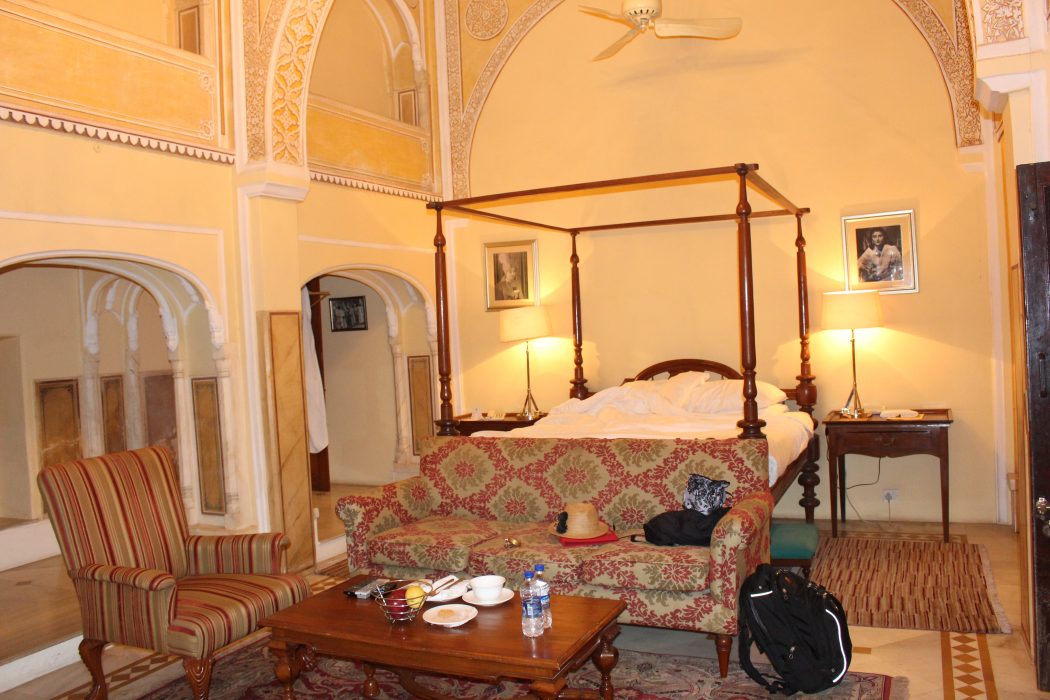
In addition to staying in a royal home, there are many sites in Jaipur to visit to get a taste of the life of the Maharaja:
1. Amber Fort: A popular attraction at this UNESCO World Heritage Site is to ride an elephant to the gate. Located 12 km north of Jaipur in the town of Amer, Amber Fort (aka Amer), is a 16th century architectural marvel made of red sandstone and marble. Its Palace of Mirrors has beautiful mirrored ceilings; and there are several courtyards and “apartments” for each of the royal women (the king had 12 queens), and a lovely garden and temple.
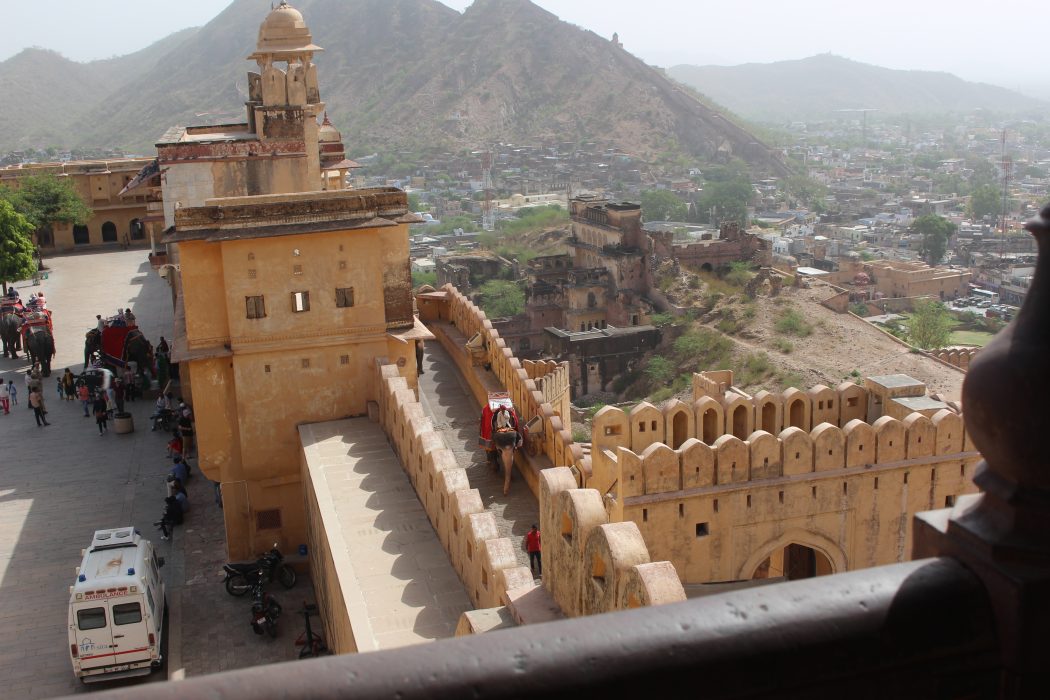
Underground tunnels connect to nearby Jaigarh Fort, part of the same complex, that was built as a military fort to protect Amber Fort and palace. Renowned for the world’s largest cannon on wheels and an intriguing story of hidden treasure.
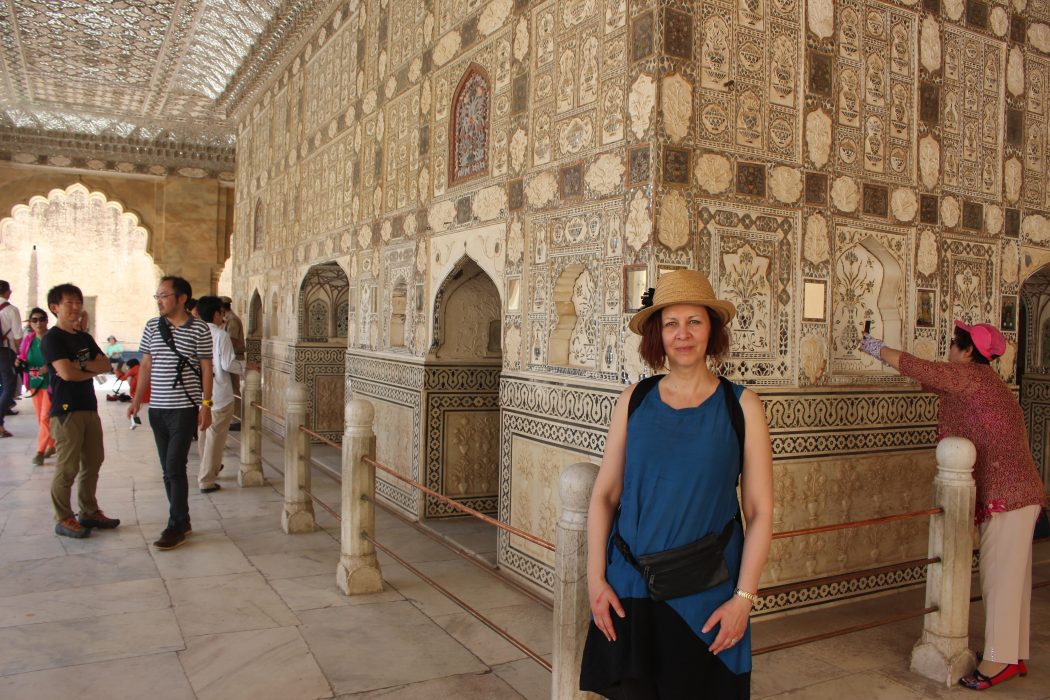
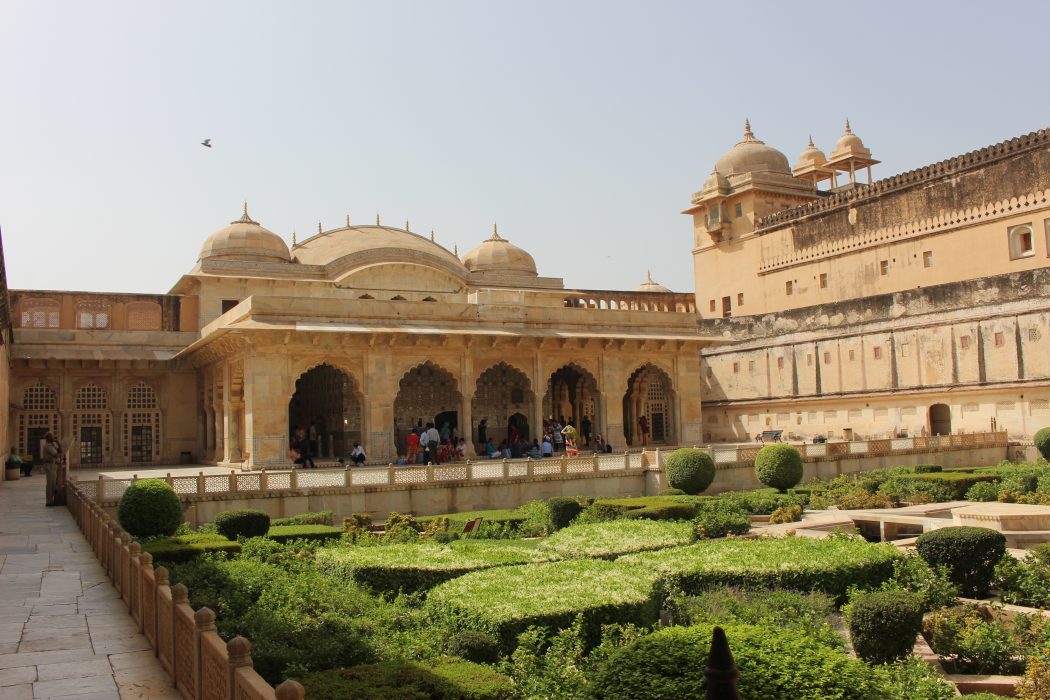
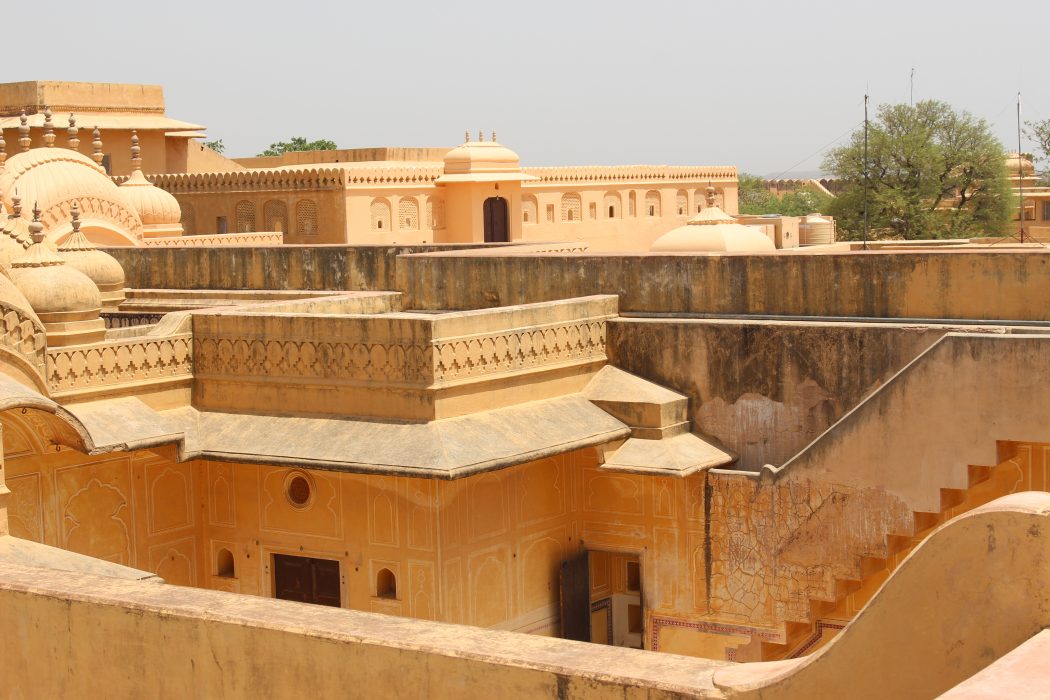
2. Naharghar Fort: the “abode of the tigers” was built at the edge of the Aravalli Hills, and offers a must-see view overlooking the Pink City.
3. Hawa Mahal “Palace of Winds:” a 5-storey façade built for royal women to watch processions and street festivals below through windows covered with lattice, as they had to be hidden from sight.
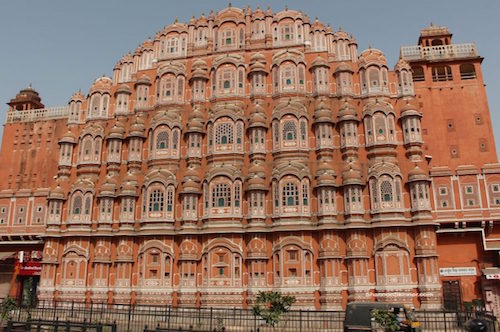
4. Maharaja’s City Palace: a former royal residence that is now part museum with a small portion used by Jaipur’s current royal family. The museum has a variety of weapons, textiles, and clothing of past kings. In the courtyard, music students attend flute lessons.
5. Jantar Mantar astronomical observatory: this UNESCO world heritage site is one of the largest stone and marble-crafted astronomical observatories in the world, built 1728-1734 by Maharajah Sawaii Jai Singh II.
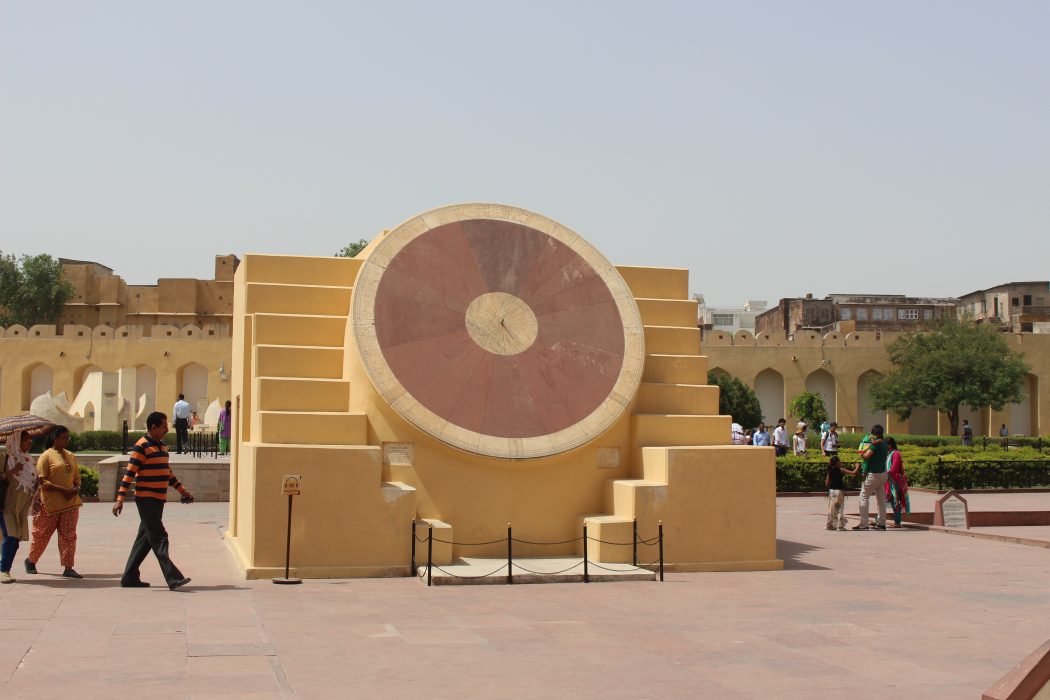
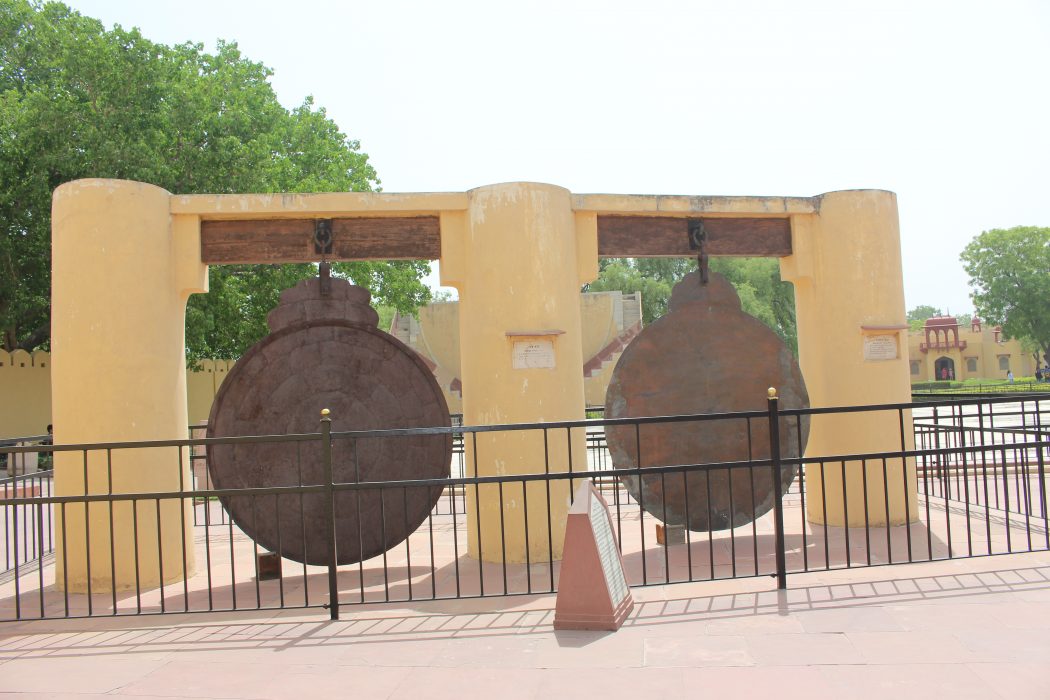
6. Galta Monkey Temple: a newer temple built on ancient land that looks like a palace, honours the Hindu Monkey God. Many monkeys dwell here. Local Hindus come to swim in the water that flows from the mountains, and it provides tranquility from the city.
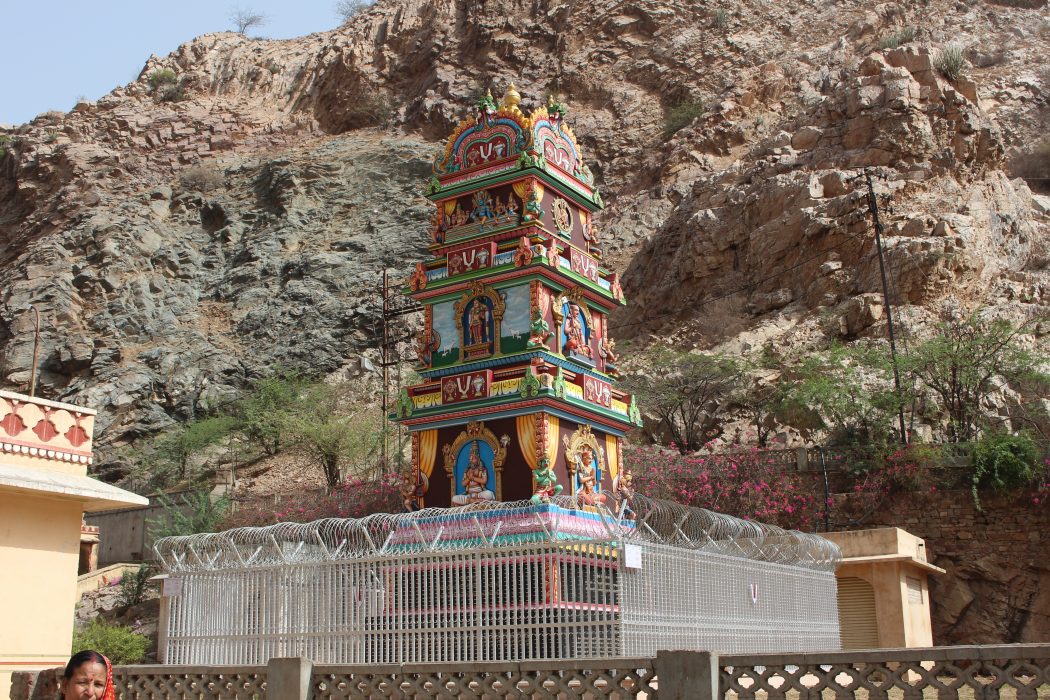
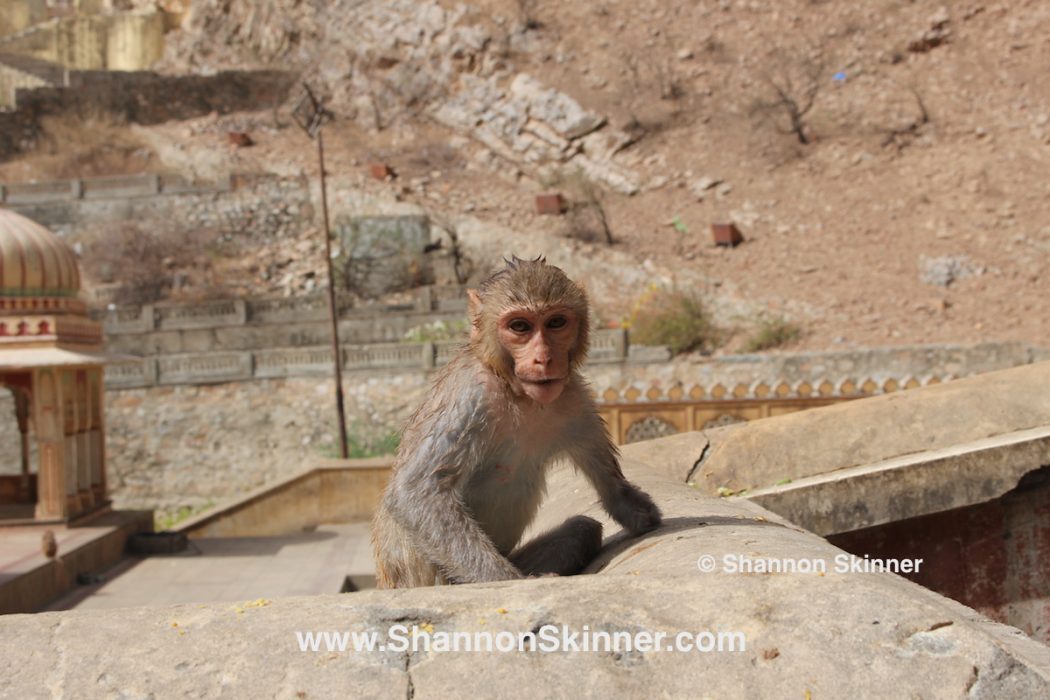 Accommodations provided courtesy of Samode Haveli; arrangements for land transportation and guide provided by Vasco Travel.
Accommodations provided courtesy of Samode Haveli; arrangements for land transportation and guide provided by Vasco Travel.
Shannon Skinner is a television and radio host, speaker and author, and occasionally writes travel articles at http://www.ShannonSkinner.com.
Travel the world through all your senses
Ever since I was the age of 20, when after graduating from university and moving to the U.K., I have had perpetual wanderlust. My father once called me a rolling stone (as in a rolling stone gathers no moss) and a dear friend refers to me as a tumbleweed, though I’m not sure that sticks. What keeps me interested in seeing more of the world is that travel enables me to experience life through all of my senses, and I believe this has made me a well-rounded, better person.
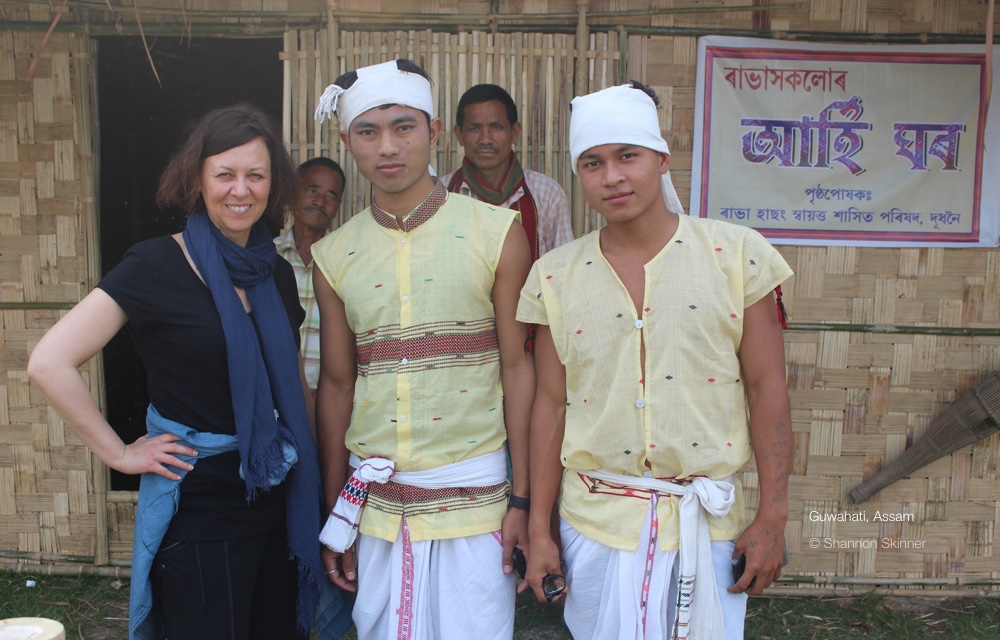 Drummers perform at Rongali Bihu festival in Assam ’15. Yep, I’m a groupie.
Drummers perform at Rongali Bihu festival in Assam ’15. Yep, I’m a groupie.
Our lives are enriched by experiencing the sights, sounds, tastes, scents and textures of other cultures, as well as our own. Food, drink, music, dance, sports are all ways we can experience culture. By experiencing different cultures, we build bridges to connect and understand one another. We can only appreciate different cultures when we make a choice to experience them.
From my travels around the world, I have danced with the tribes in northeastern India (Assam) and saw living root bridges, remarkable natural architecture in the jungle, which was like stepping into a science fiction movie. I learned how to make tasty chocolate pots in Geneva, Switzerland. In Scotland, I traced my Stewart family roots, from the line of the noble Stewarts, which took me across the country to see castles, estates and farms.
I recall the pungent spices bellowing from the food stalls in Bangkok, and the salty sea air brushing my nose in the Caribbean. The image of the blue sea against crisp white buildings of Greece keeps me longing to return. In Venice, the taste of Italian ice cream while sitting in the piazza and watching beautiful people pass by. In Prague, the enchanting classical music in palaces and churches. The sweet voices of tribal children in northern Thailand as performed a traditional song and dance around a campfire. The roar of chants and cheers of passionate soccer fans in a stadium in England. The touch of the delicate woolen sweaters in the shops of Dublin, and the coolness of the stone wall of the oldest church in Scandinavia.
I remember swimming in salty springs in Turkey and dancing like a maniac in the clubs of Tenerife, and savouring the taste of fresh dates in Morocco. And hearing the monkeys playing in the trees in the earning mornings in Costa Rica gave me a case of the giggles.
Traveling the world has truly enriched my life. How has it enriched yours? I would love to hear from you. Leave me a comment or tweet to me at @Shannon_Skinner.
Read more about my travels at Shannon’s Travel Bag.
Some of this article is a re-purposed short excerpt from my book, “The Whispering Heart: Your Inner Guide to Creativity.”
Shannon Skinner is on a journey of following her heart and creating change in the world. She is a broadcaster, inspirational speaker, author and writer on the subjects of change and travel. Her inspiring keynotes are uplifting and transforming lives around the globe. To book her as a speaker for your next conference or professional development day, contact shannon (at) shannonskinner.com. Watch her interviews with extraordinary women at www.ExtraordinaryWomenTV.com.
Follow me on Twitter: @Shannon_Skinner
Instagram: shannon.skinner
Web: www.ShannonSkinner.com
Turn your 2016 bucket list into a love list
Director Rob Reiner’s 2007 comedy-drama, The Bucket List, about two terminally ill men (Jack Nicholson and Morgan Freeman) who set out on an adventure to see and do the things they desired before they die, inspired people around the world to take action on their dreams.
Nearly a decade later, the term bucket list continues to be a popular phrase used when referring to experiences someone desires and intends on accomplishing, knowing full well there is an expiration date. However, the term bucket list makes me cringe because it reminds me of my great grandmother’s metal slop bucket filled with food scraps that sat on the doorstep of her farmhouse in the Canadian prairies. If this is ruining the idea of a bucket list for you, I have a better alternative:
Turn your bucket list into a love list.
Having a love list, that is, a list of loves, gives you a different visual and, with that energy and vibe, might serve you better. Whether your hearts’ desires are world travel, writing a book, creating a blog, speaking to groups, starting a family, rock climbing or attending Burning Man, turn them into a love list – and toss away the bucket.
Words give thoughts their shape. – Goethe
Writing a love list is a powerful exercise that enables you to get clear on what is high on your values. Whenever you act on what is high on your list of values, you are doing things aligned with your heart. How do you know what is a high value? You will use words such as “I know,” “I am,” “I can,” rather than “I don’t know,” “I am not,” and “I can’t,” which point to lower-ranking values.
Knowing what you values are and prioritizing them is key to having a fulfilling life and manifesting our heart’s desires. Our life purpose is an expression of our highest values, or, in the case of business, the highest priority. Leaders live by their highest values, and usually love what they do. Take Richard Branson, for example, who is one of the biggest entrepreneurial thinkers of our time and who is making a significant contribution to society, and loves to have fun while doing it. Mother Teresa, a different kind of leader and whose ashram I recently got to visit while in Kolkata, India, loved her work and was fully dedicated to helping the poor.
Review your list of loves as often as possible and visualize your life’s purpose. Do this daily, or several times a day if you can. By continuing to focus on your love list, you minimize distractions, which is an ever growing problem in our society today. Focus on the details. Fine-tune. Re-write. And fine-tune again.
The idea of writing down your loves is not new. Even the ancients knew the power of writing and today we intuitively know its value. But sometimes we need a reminder or gentle nudge.
And so, with the fresh start of the New Year upon us, here are some of the top items on my list of loves for 2016:
1. Travel to at least a dozen beautiful and inspiring destinations in the world, and write about my experiences to inspire others to experience more of this amazing planet offers.
2. Speak to many more groups of people around the world, to share messages of love and wisdom
3. Get paid handsomely to do more of what I love to do.
Finally, I would love to hear what some of your list of loves are. Please leave me a comment or tweet to me at @Shannon_Skinner.
Shannon Skinner is a Toronto-based television and radio show host, speaker, author and writer. To hire me as a speaker for your group or organization, please contact me at shannon (at) shannonskinner.com.
We can be silent no more: Nirbhaya, the play
I know how the story ends. We all do, sadly.
On this Tuesday night, I am seeing the critically-acclaimed production of Nirbhaya, presented by Nightwood Theature, on stage at Toronto’s Harbourfront Centre, and without having done my homework, I wonder how the playwright is going to handle such a disturbing subject matter. Nirbhaya, written and directed by South African dramatist, Yaël Farber, is the story of the brutal rape, and subsequent death, of a young woman in December 2012 on a bus in Delhi, India, which shocked the world. Nirbhaya, Hindi for “fearless,” is the name given to the 23 year-old medical student, whose real name is Jyoti Singh Pandey, for her bravery in fighting her savage attackers, and who has become an iconic catalyst for change.
 Japjit Kaur as Jyoti, photographed by William Burdett-Coutts
Japjit Kaur as Jyoti, photographed by William Burdett-Coutts
The ensemble, six Indian female performers and one male actor, play out Jyoti’s attack and eventually her funeral. The main narrative is peppered with the performers’ real life personal stories of sexual violence, from the annoyance of being groped daily riding the city bus, to stories of assault and rape as women and children, ranging in severity. One performer tells us of being raped by her husband night after night. Another tells the story of being a young girl who is repeatedly molested by a trusted family friend. Another is brutally beaten by her father. We get a dreadful description of being burned by kerosene, ignited by the husband. Then there is the story of being savagely raped by an intruder.
As a lover of storytelling, I am reminded of the importance of theatre as an invaluable, and sometimes necessary, means of telling difficult stories — raw and gut-wrenching stories — that can resonate and transform lives. I am with great unease transported into the performer’s worlds, into their brutally honest stories that are difficult to hear – and watch. My senses do not like them. I squirm in my seat. I fidget. But the imagination, artistic choreography, talent and moving music of this live theatre – poetry on stage – has memorized and captivated me.
Then, at the end of the performance, one of the actors shouts, “We can be silent no more,” and all of the performers come together to show defiance and solidarity for women everywhere who have endured sexual violence and the shame they have lived with, and to stand up for Jyoti so her death is not in vain.
In this moment, my inner rebel kicks in. My energy rises within me. At the core of my being, I find myself in solidarity with these women, with their new-found hope.
Not just because I am a woman. But because I am a human being.
Nirbhaya is a beautiful, moving and powerful production of a difficult subject matter, and one that I hope will help make a positive impact around the world. It is running in Toronto through until November 29th, 2015 at the Harbourfront Centre.
The power of poetry
In a recent radio interview I did with poet and speaker, Reeti Mishra, a friend of mine who lives diplomat life, being married to India’s Consul General to Canada, which sees her traveling the world. She is currently based in Toronto. During our interview, she spoke of her love for poetry and read an excerpt from one of her poems inspired by her home in India and her travels around the world. I fell in love with this poem; having recently visited India, it speaks to me. I wanted to share it here. The photography is mine, taken in Kaziranga National Park in northeast India, as the falling sun washed the plains of the Brahmaputra.
It is all gold.
Over the gleaming temples,
Beyond the vast yellow fields
And within me.
The same mesmerizing Sunset over the ghats with the numerous majestic steps of Benaras from the beautifully ornated boats floating in Ganges.
The most prized view of the
sunset from the high chat of my house in Benaras.
Enclosed inside me this golden Sunset has traveled with me
To Lima, to Rome, to Kathmandu, to San Francisco, to dar es Salam, to Toronto and I dig in it
From time to time to give me hope
It grows there inside me.
Every sunset is a promise for a new sunrise.
– Reeti Mishra

